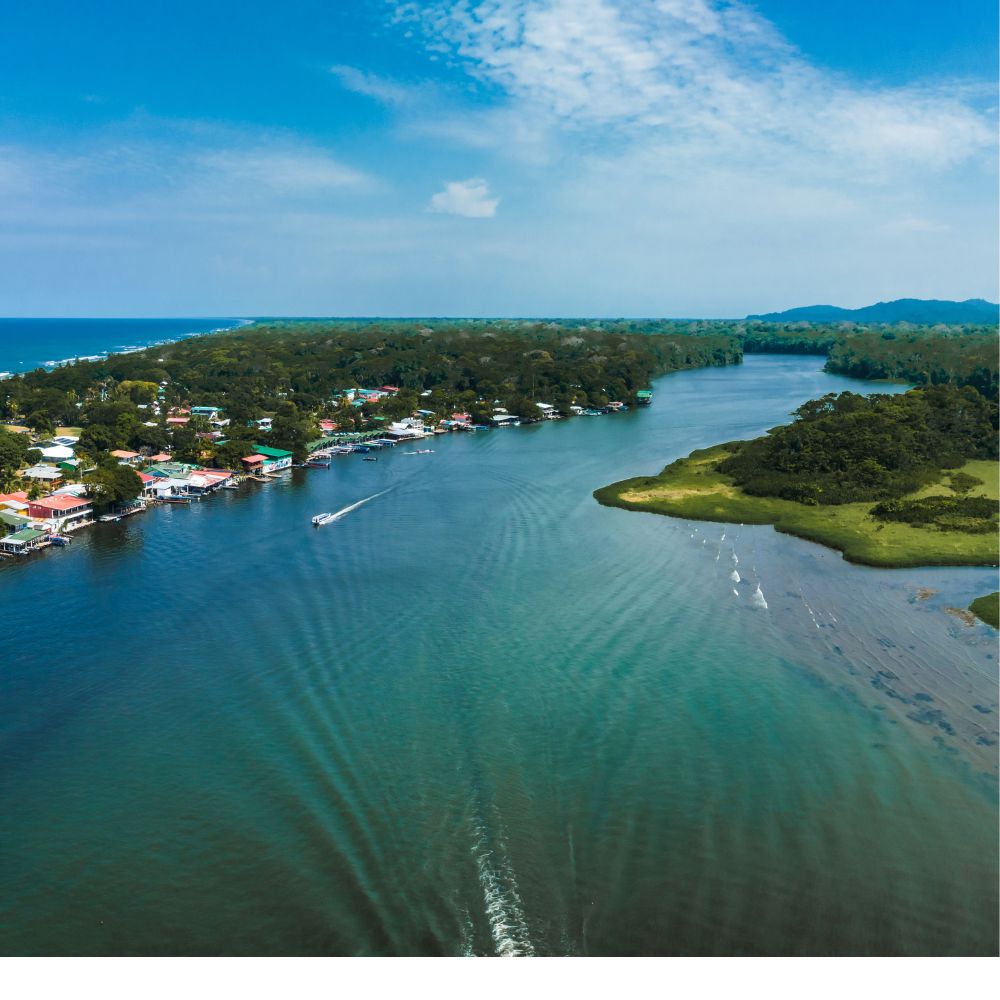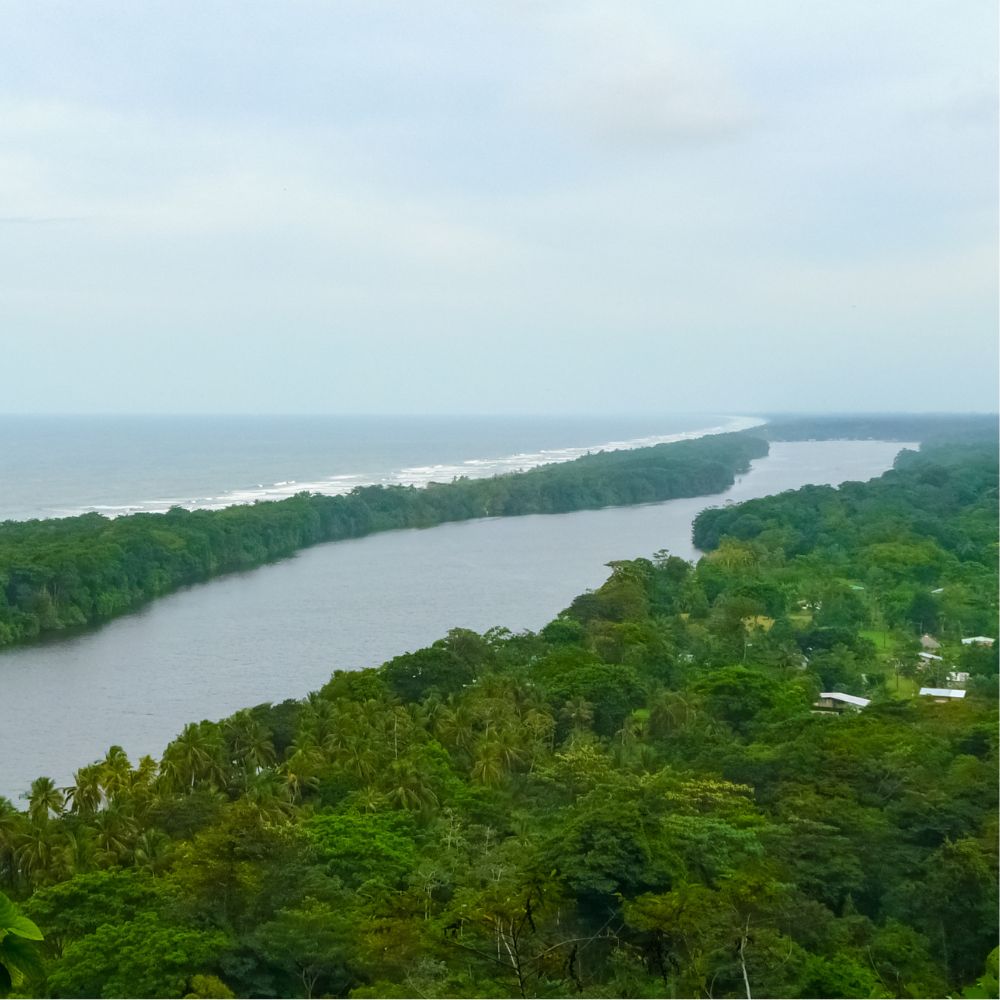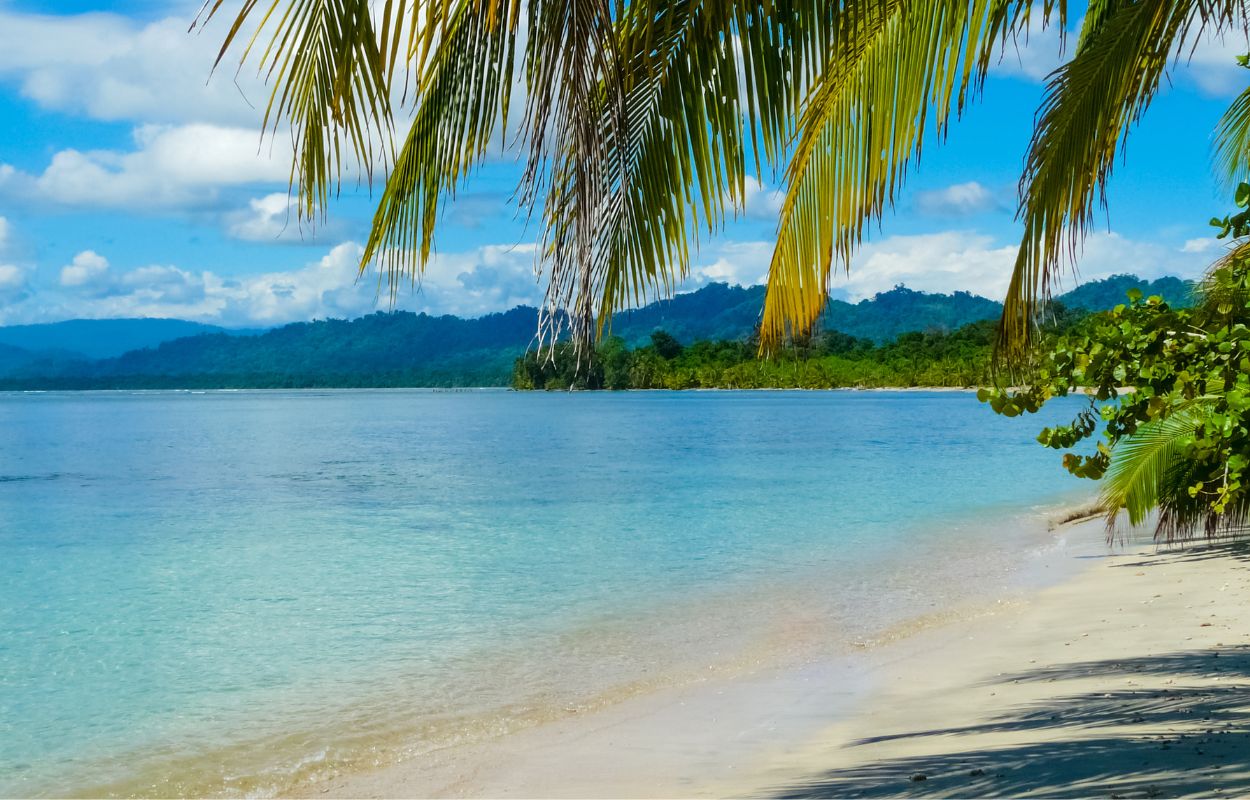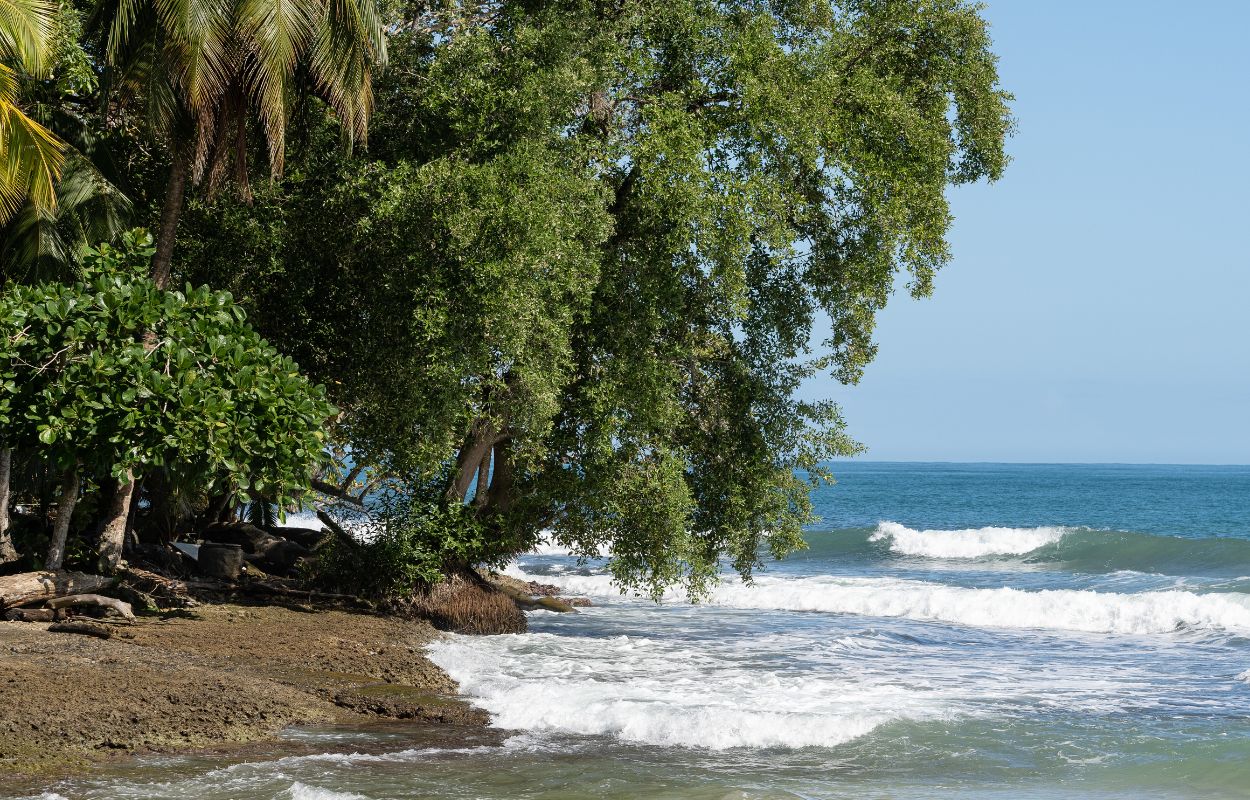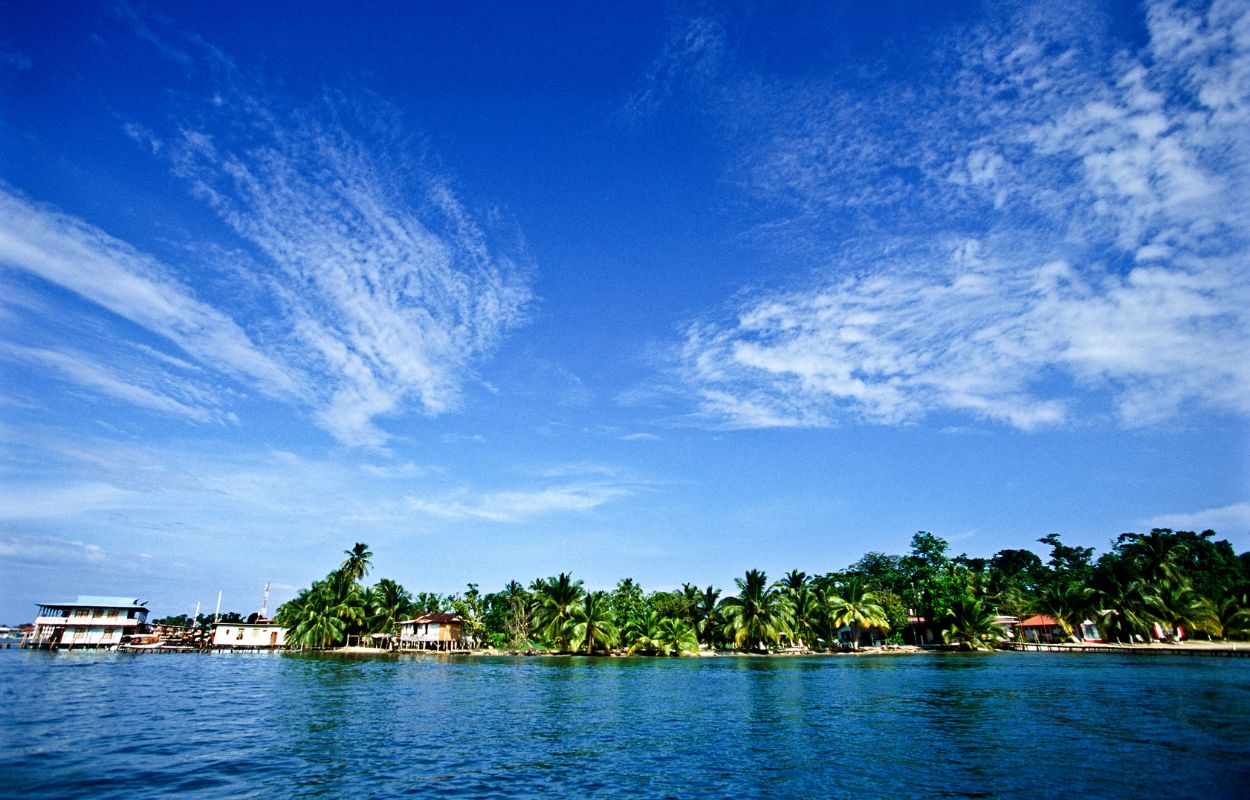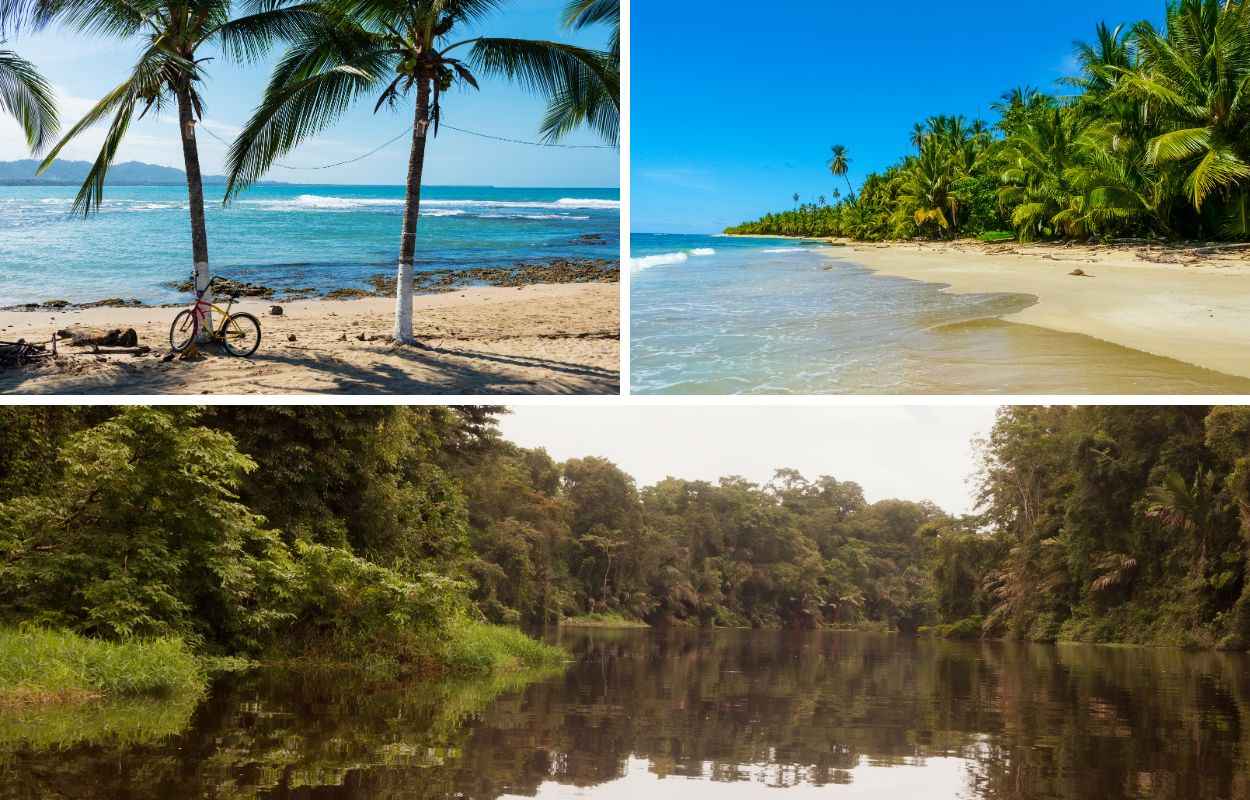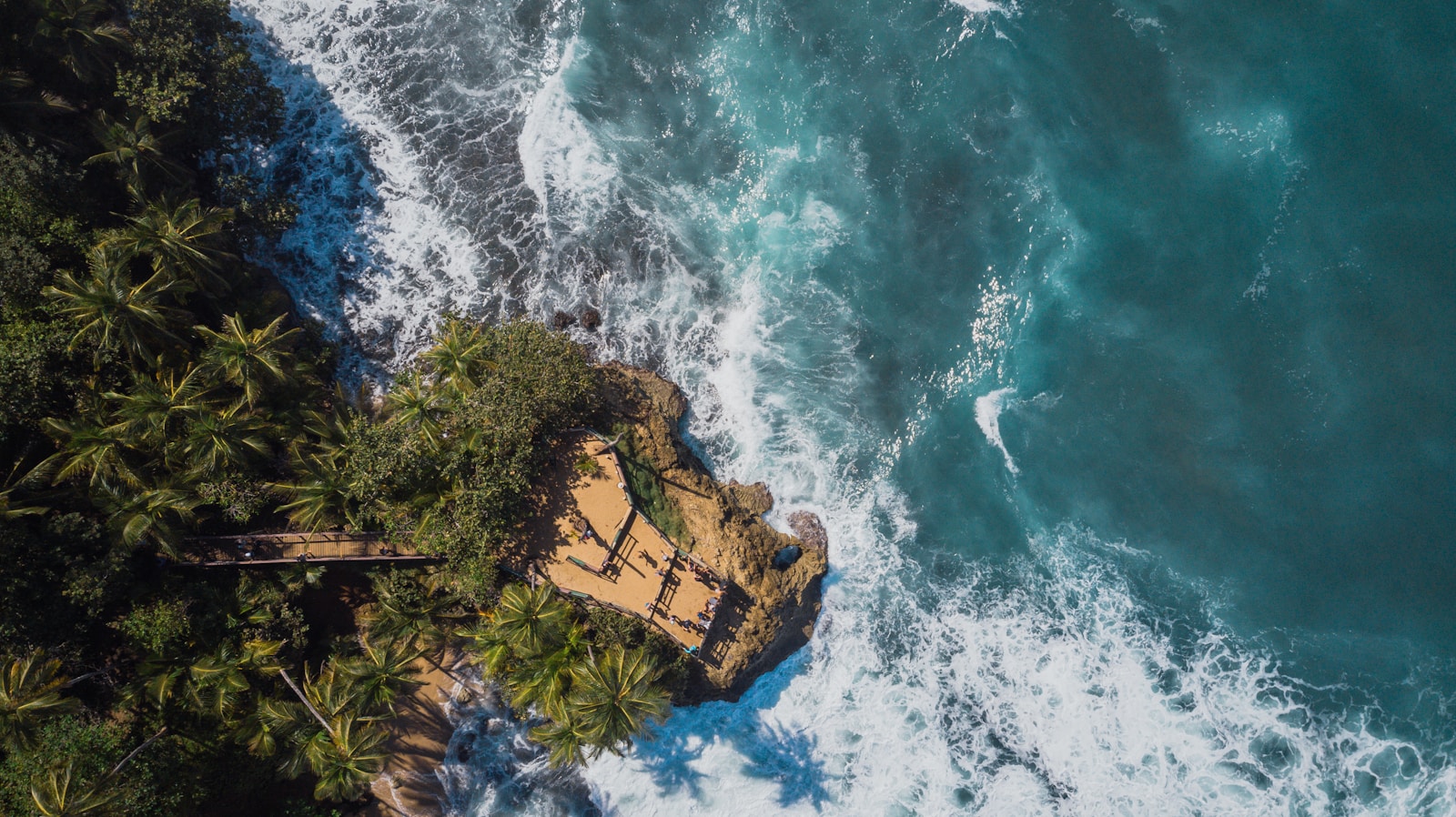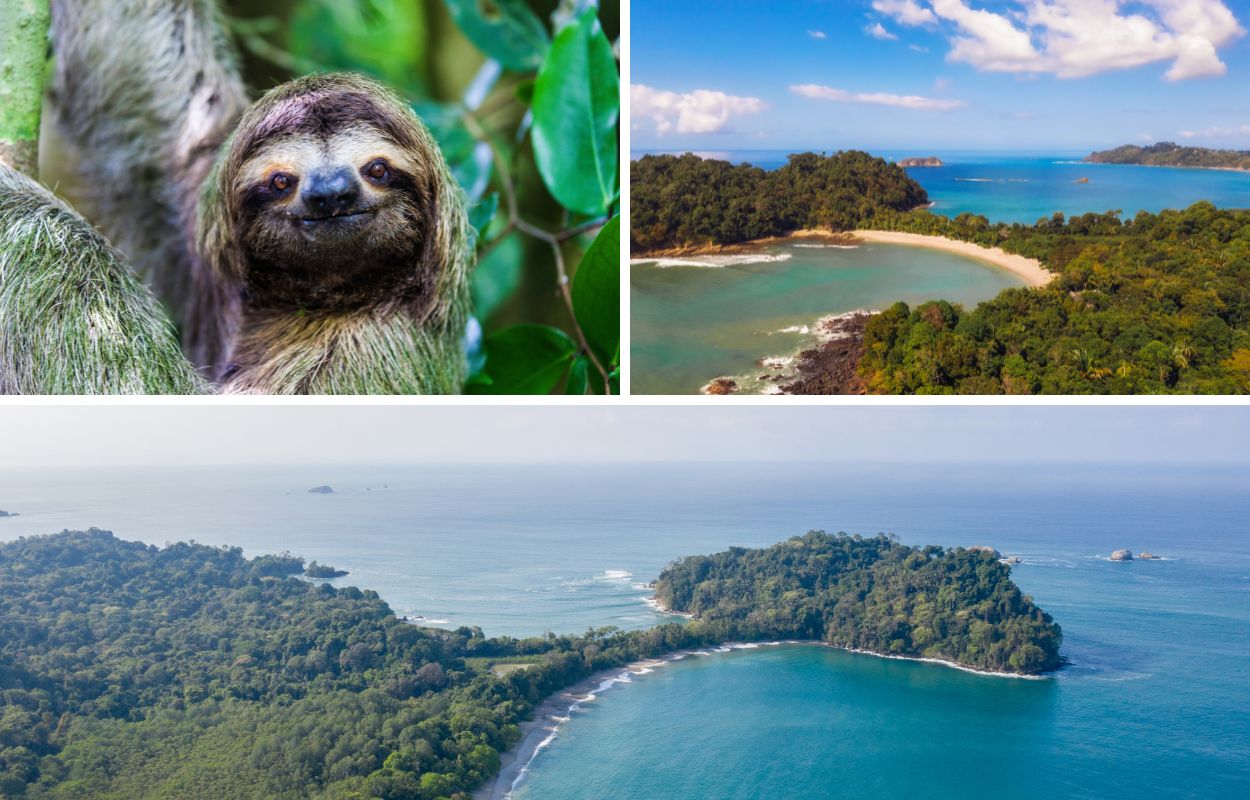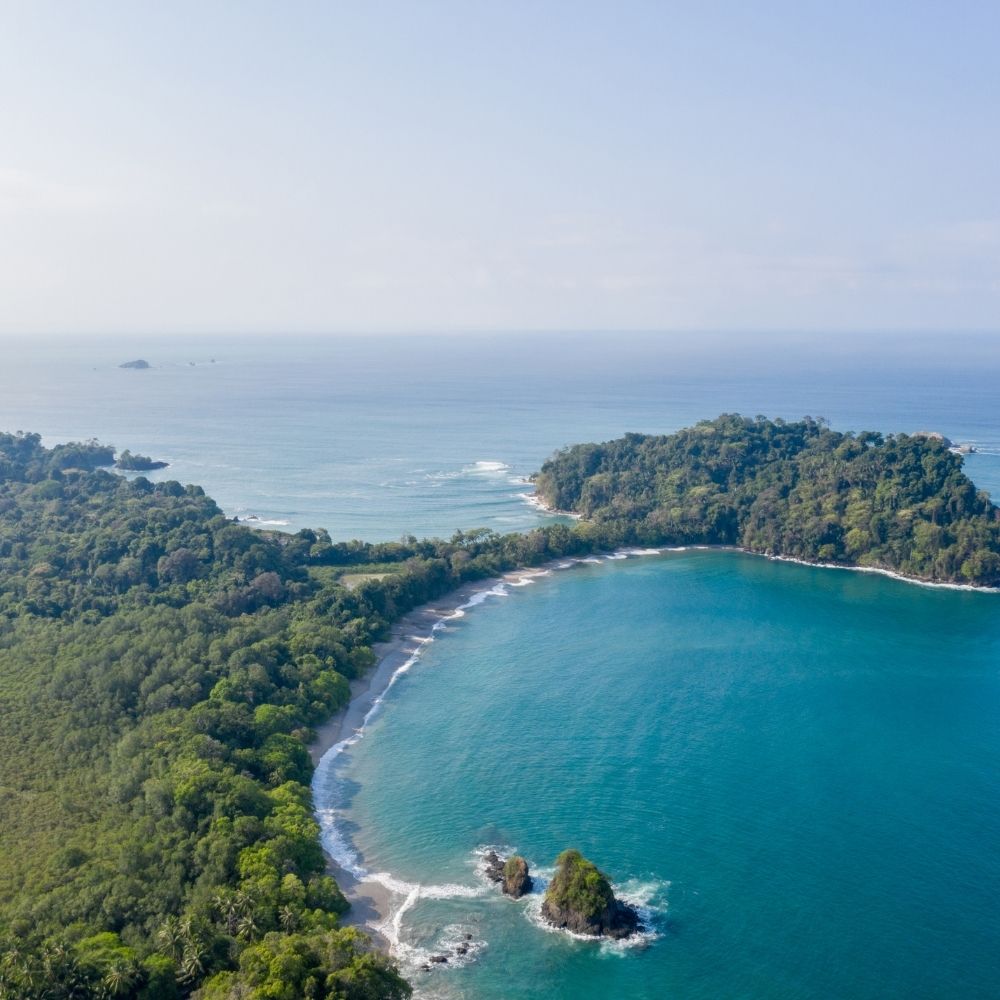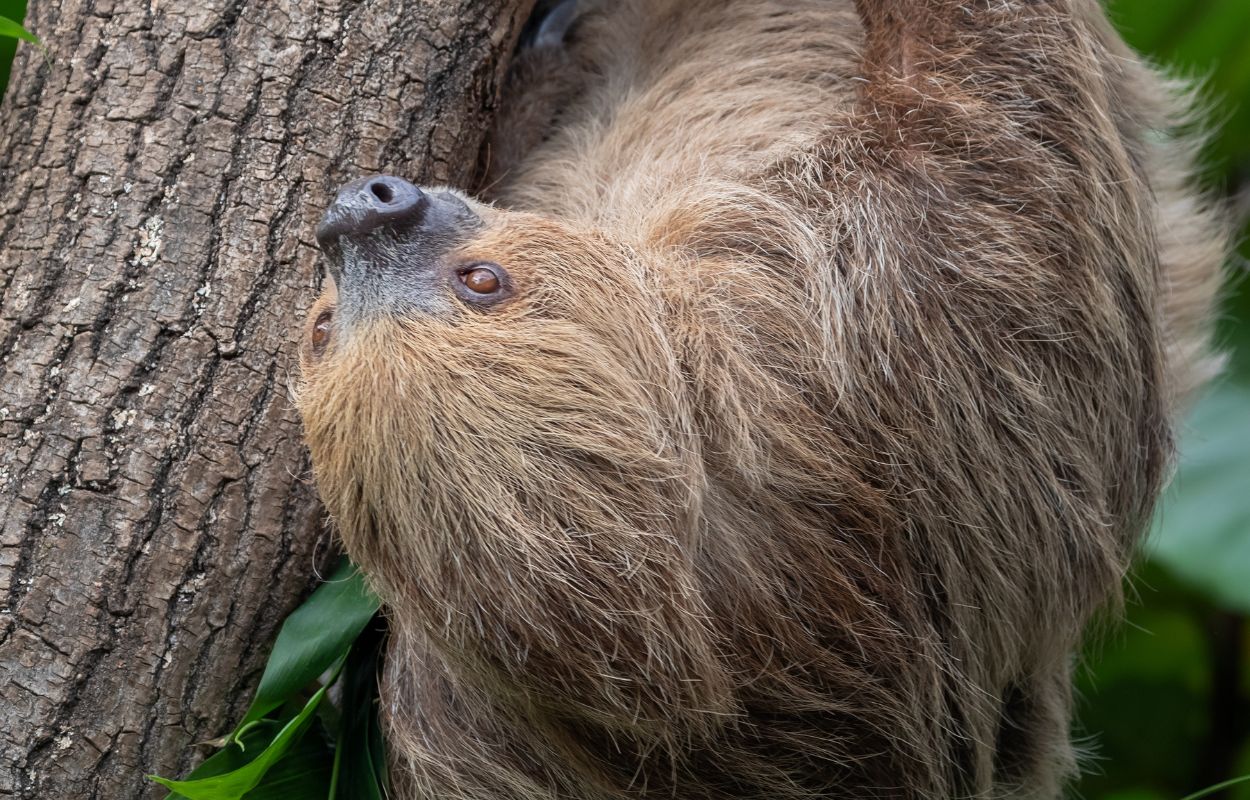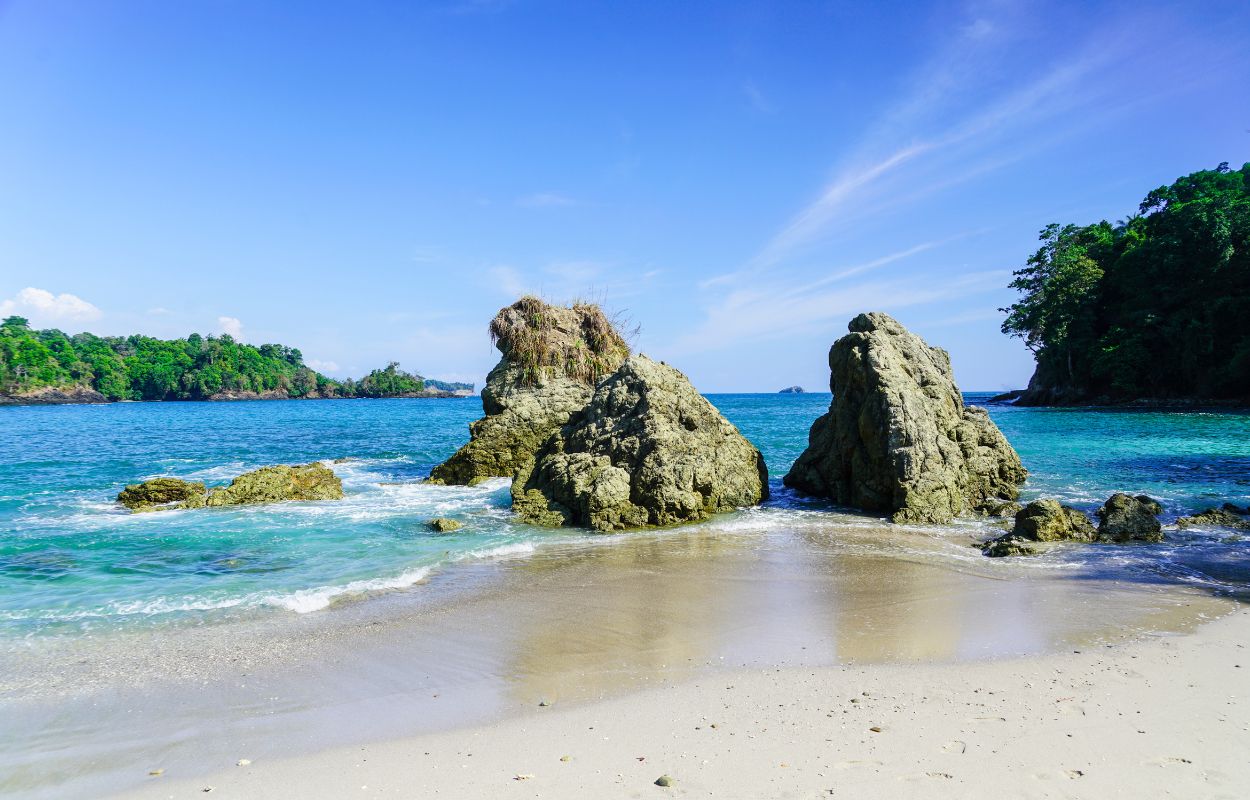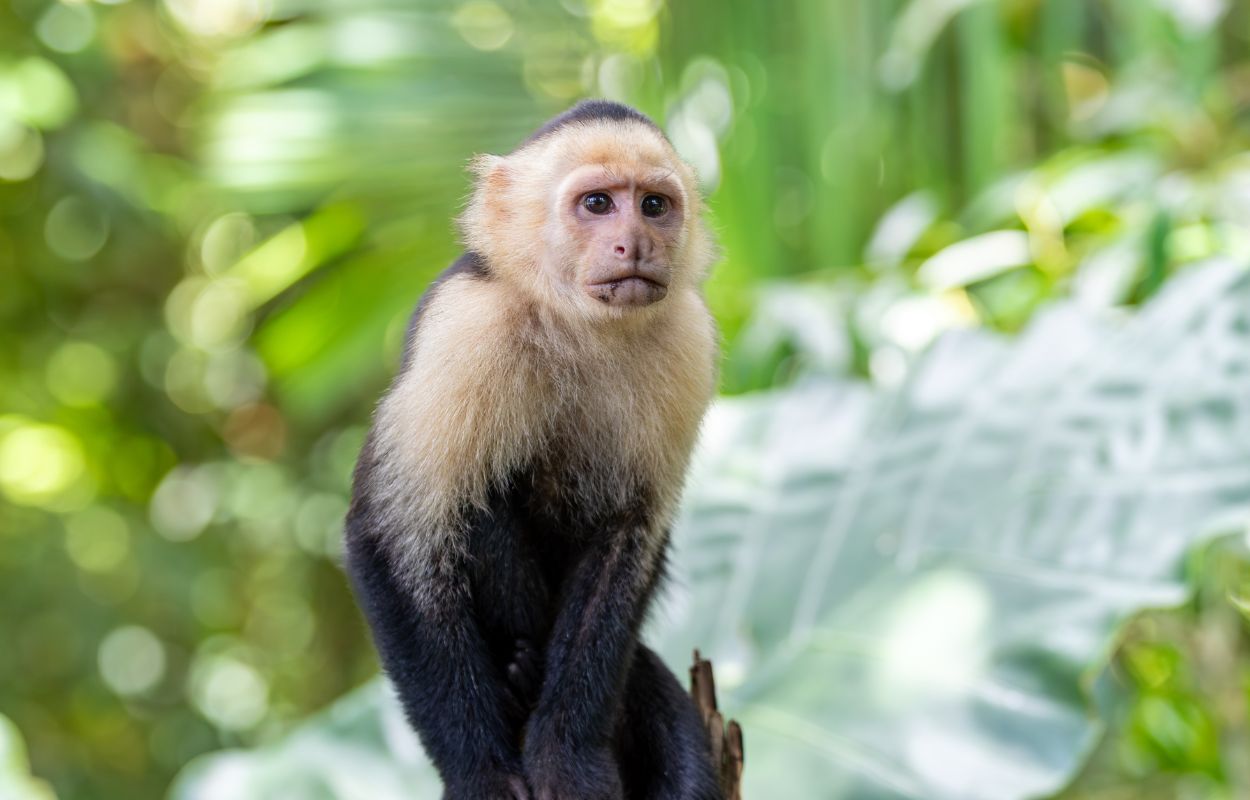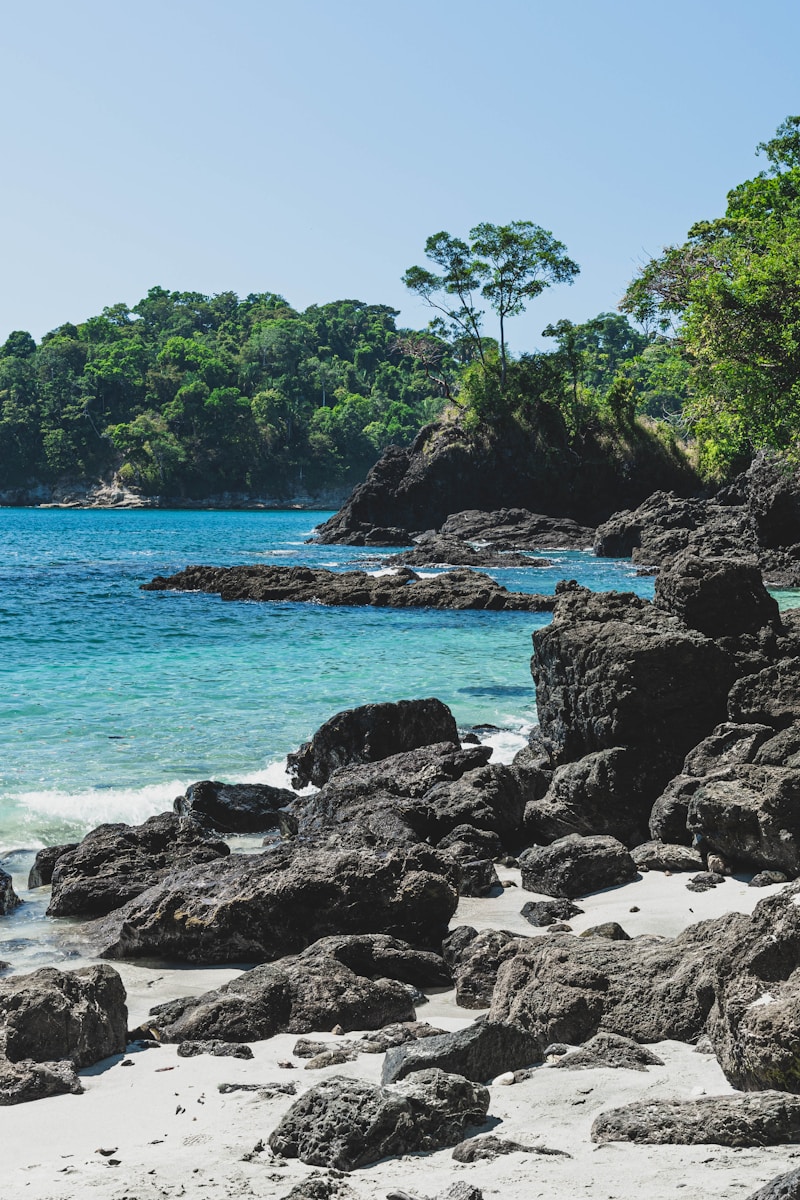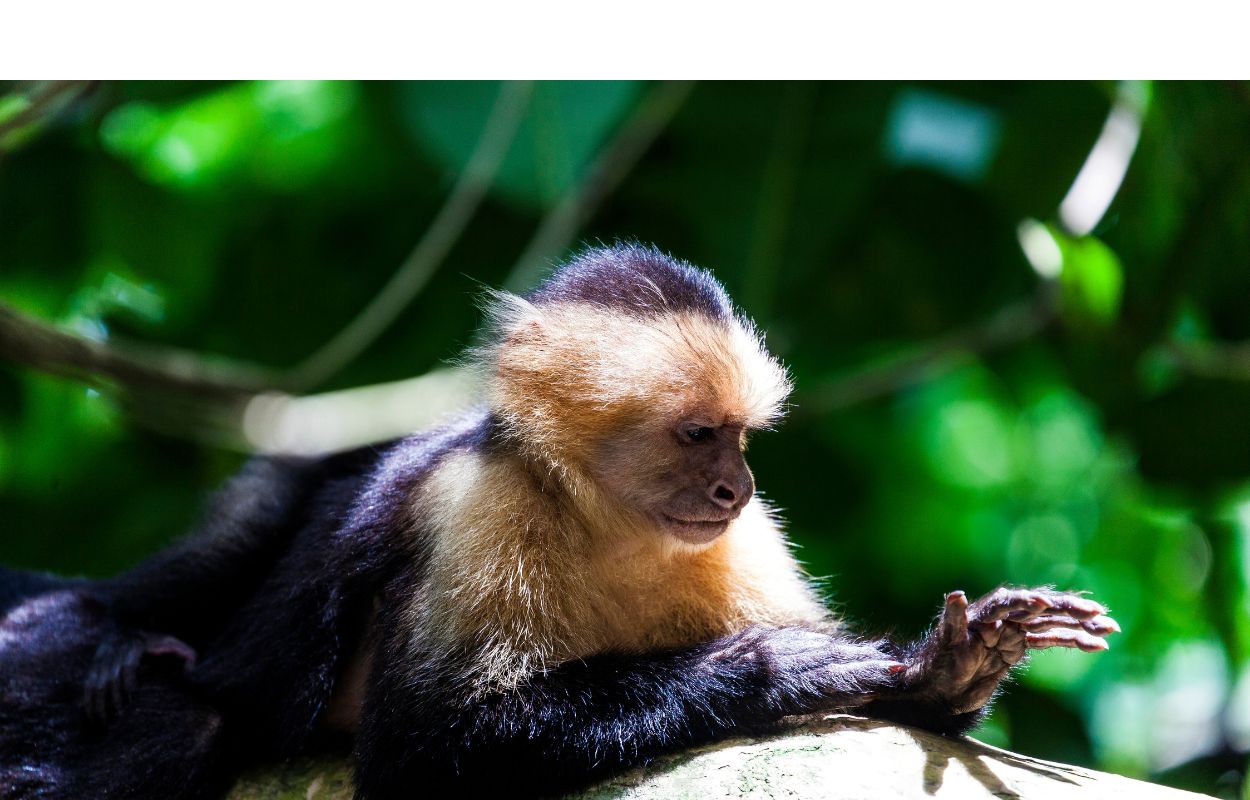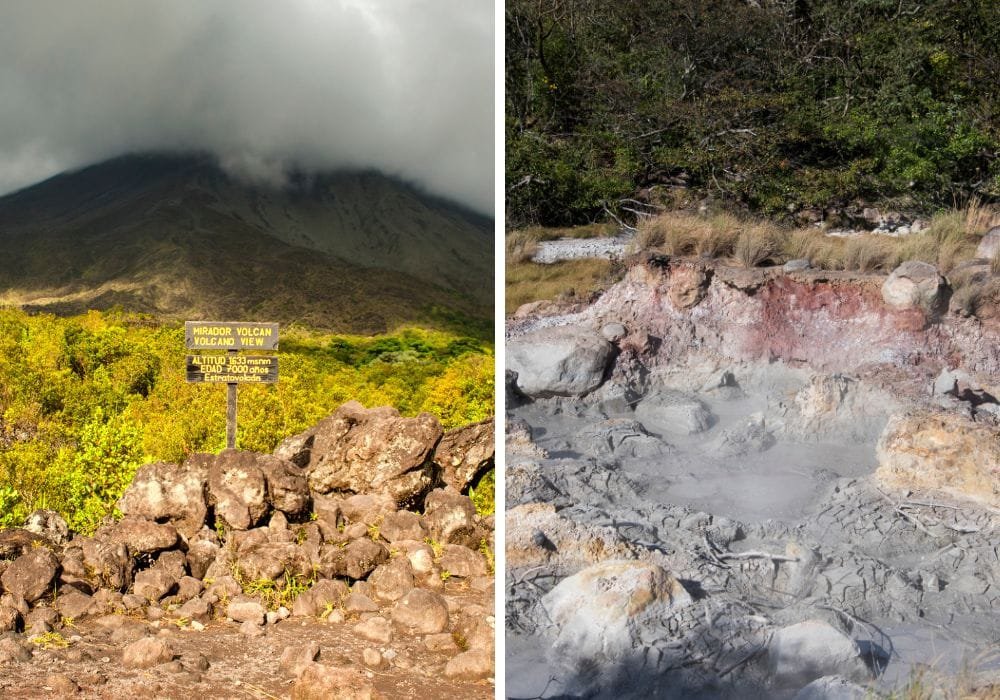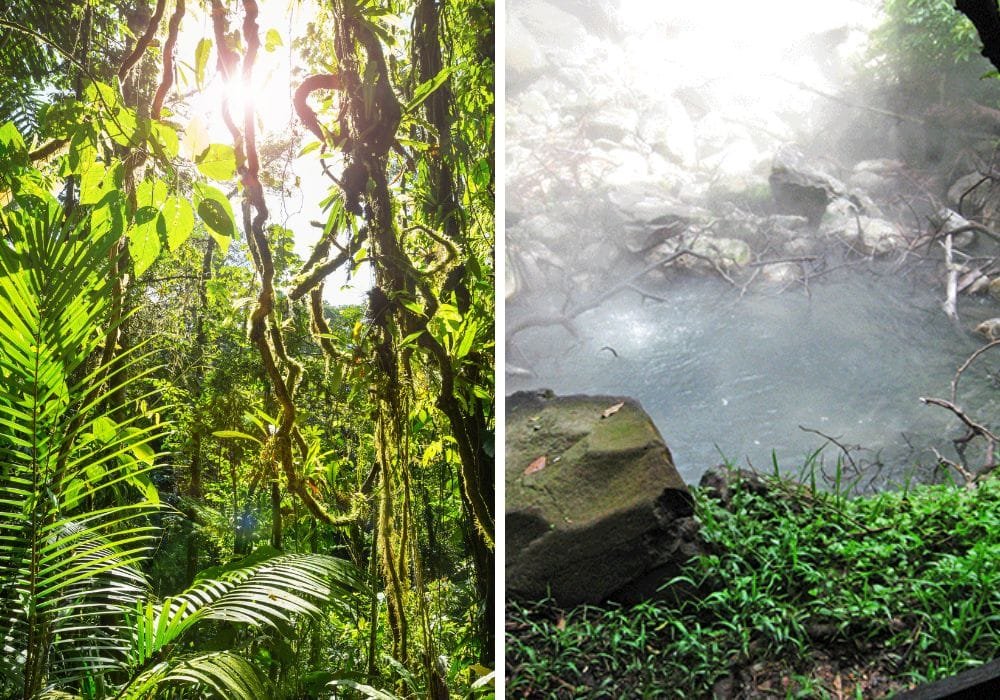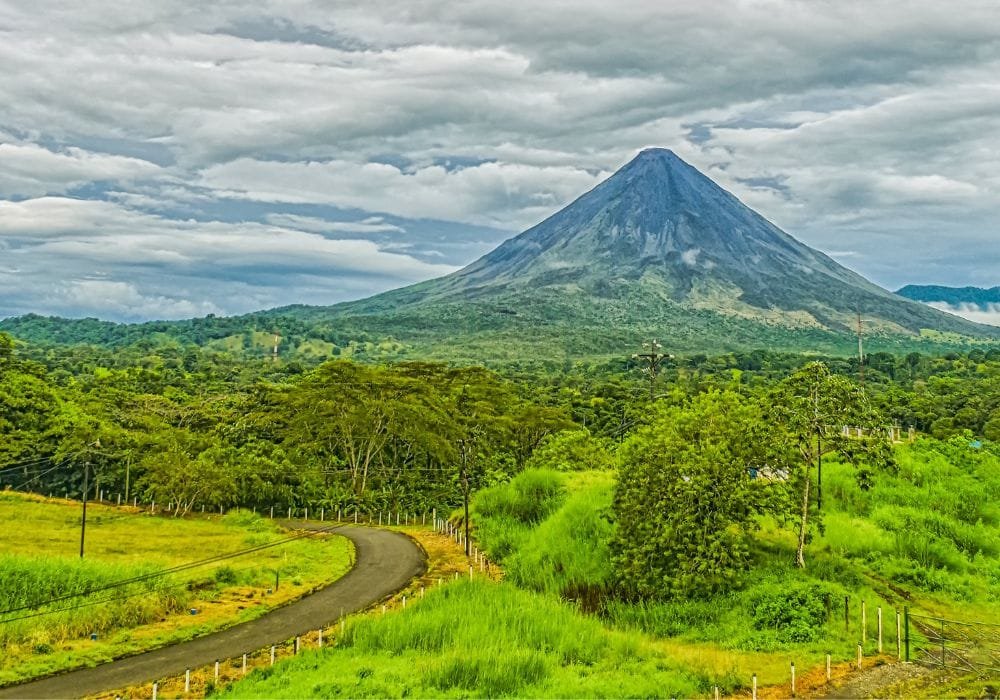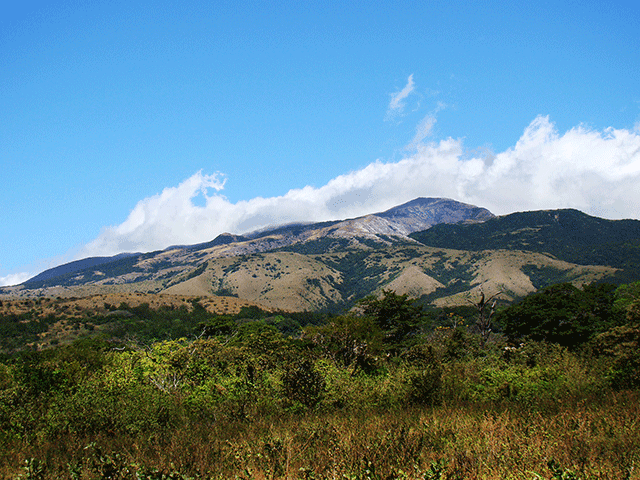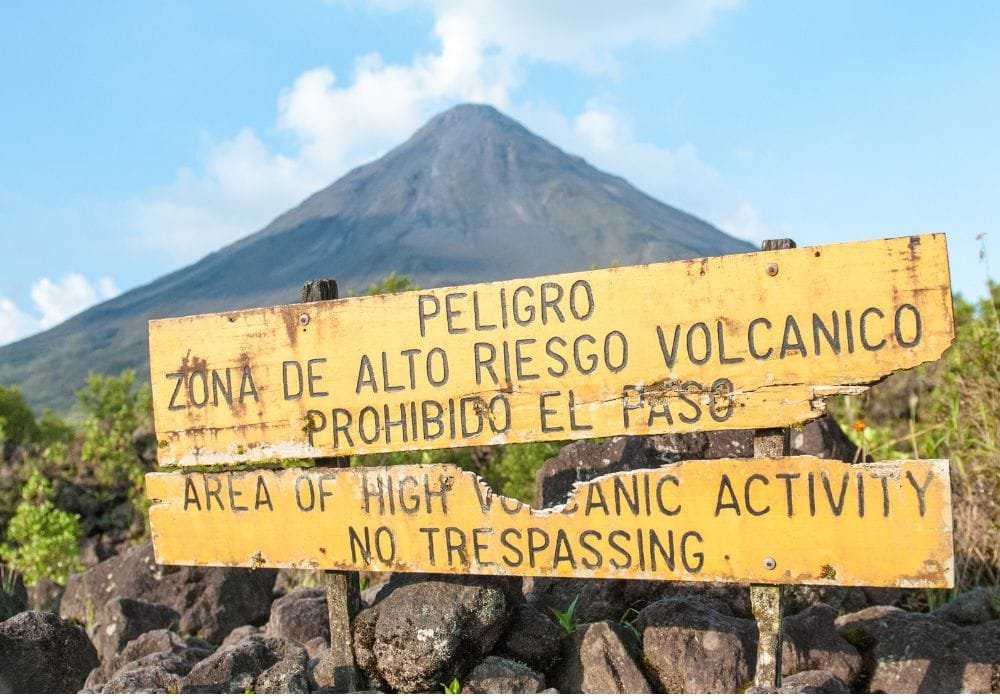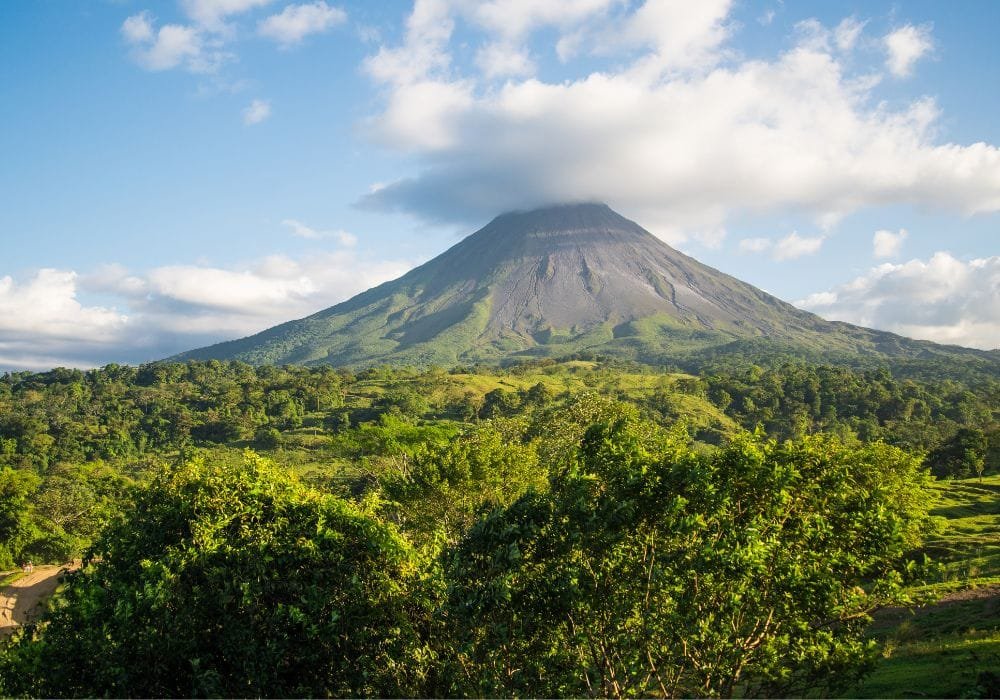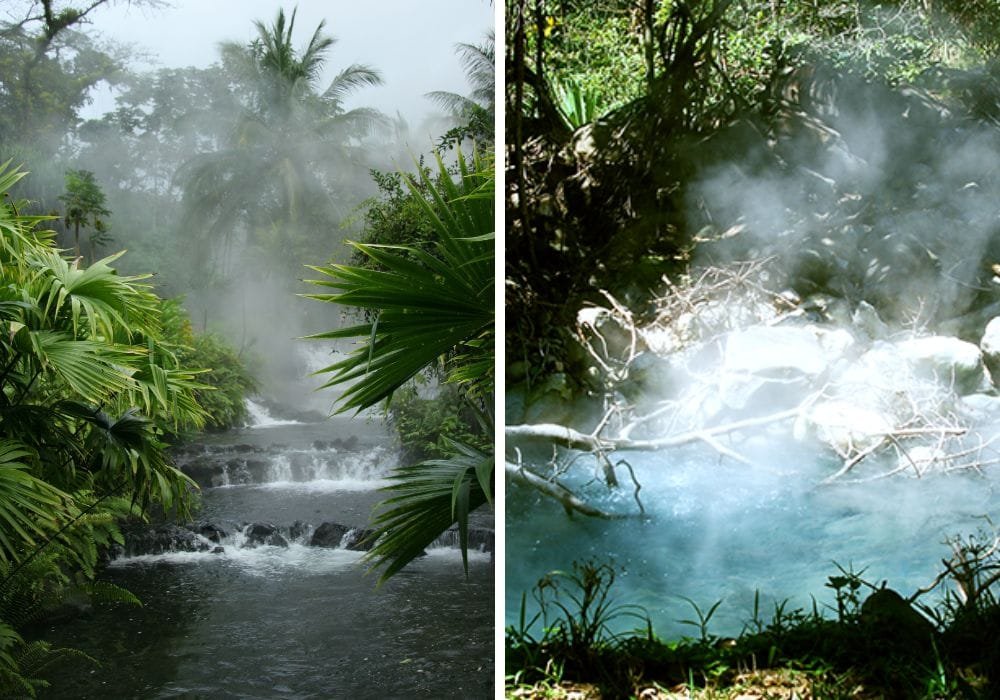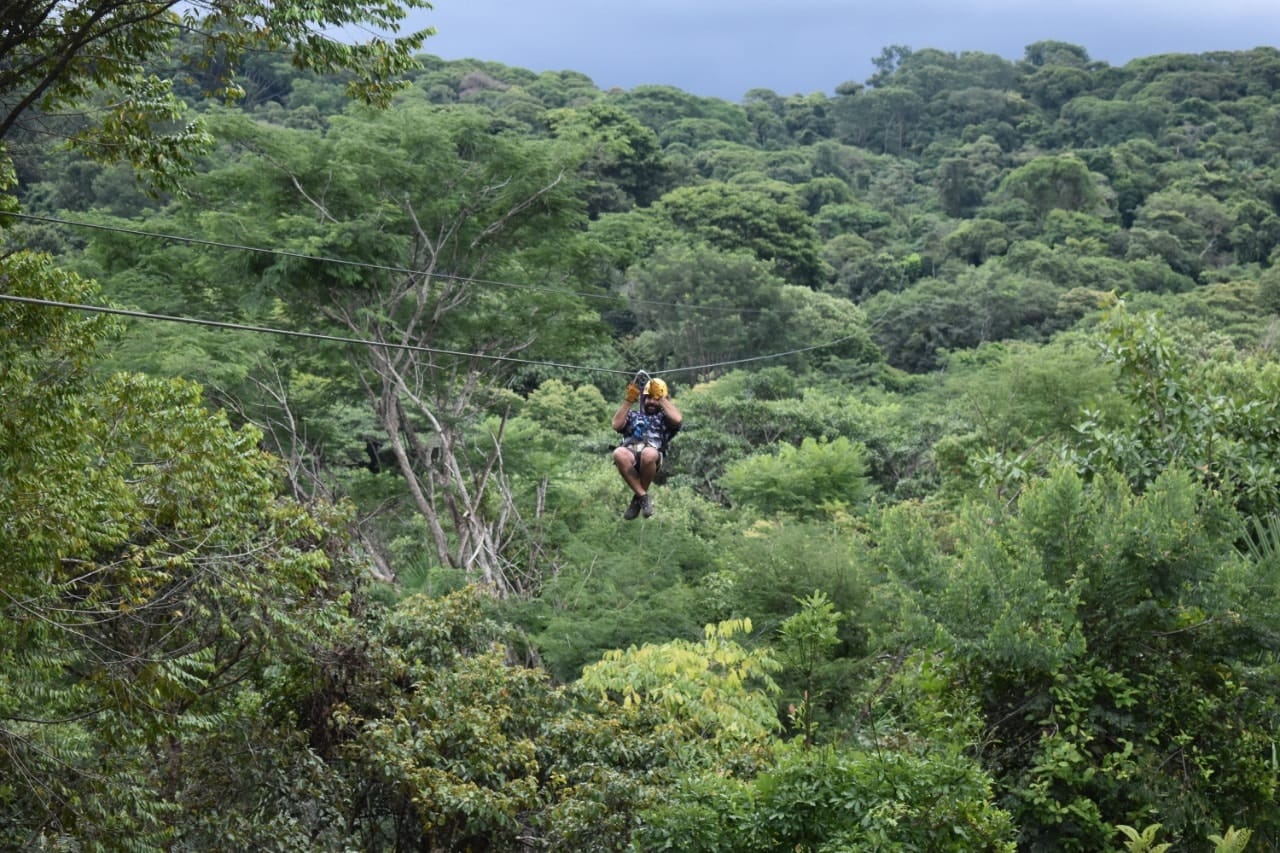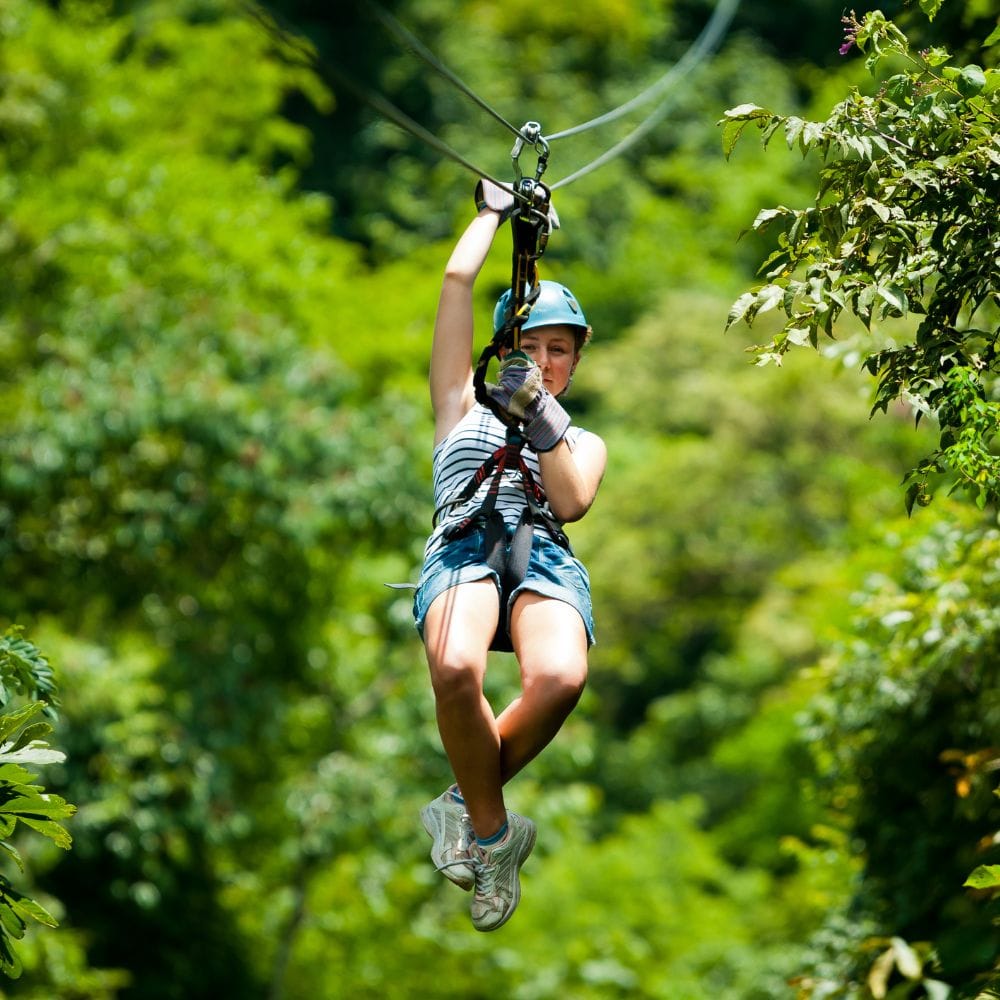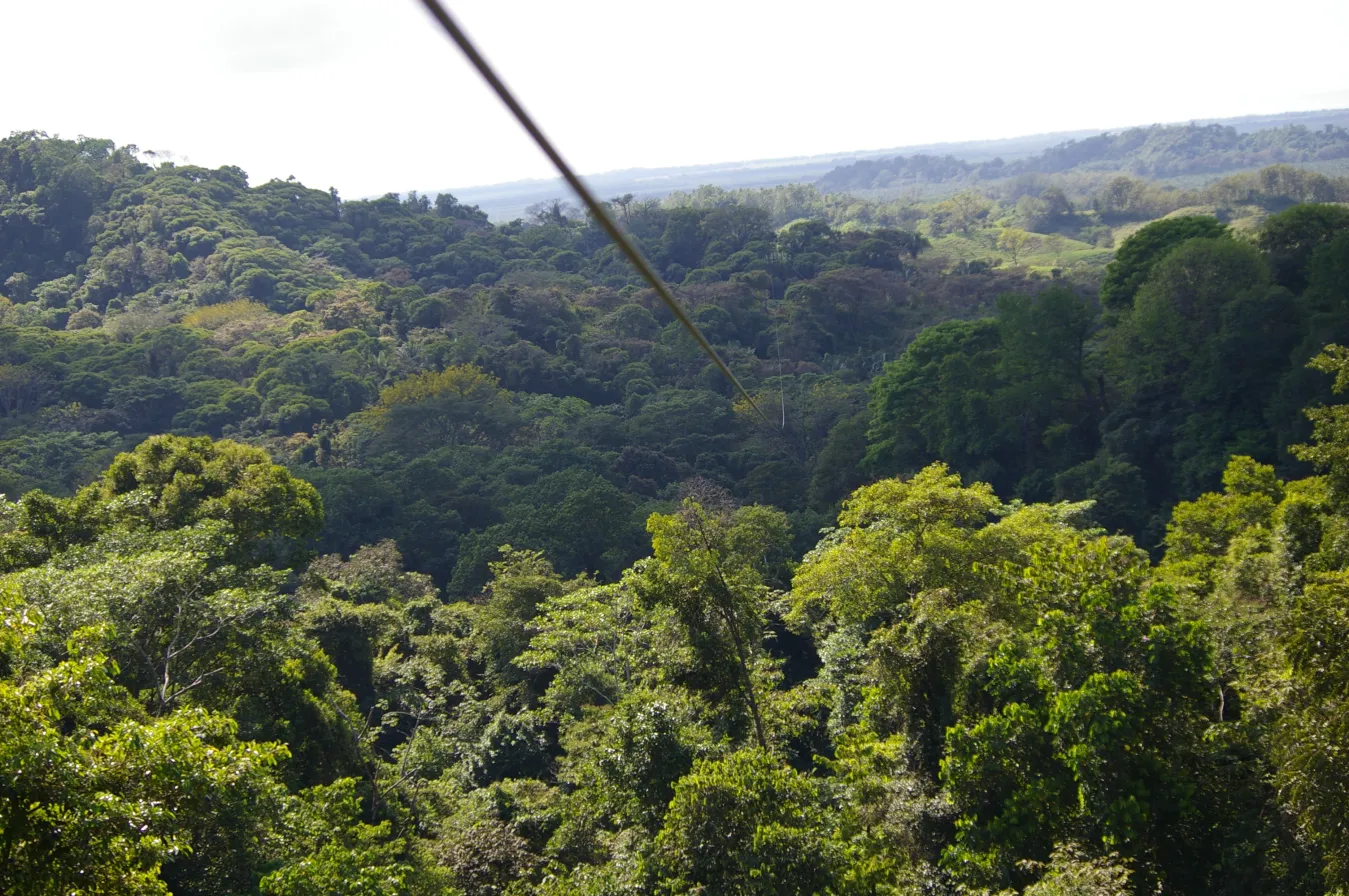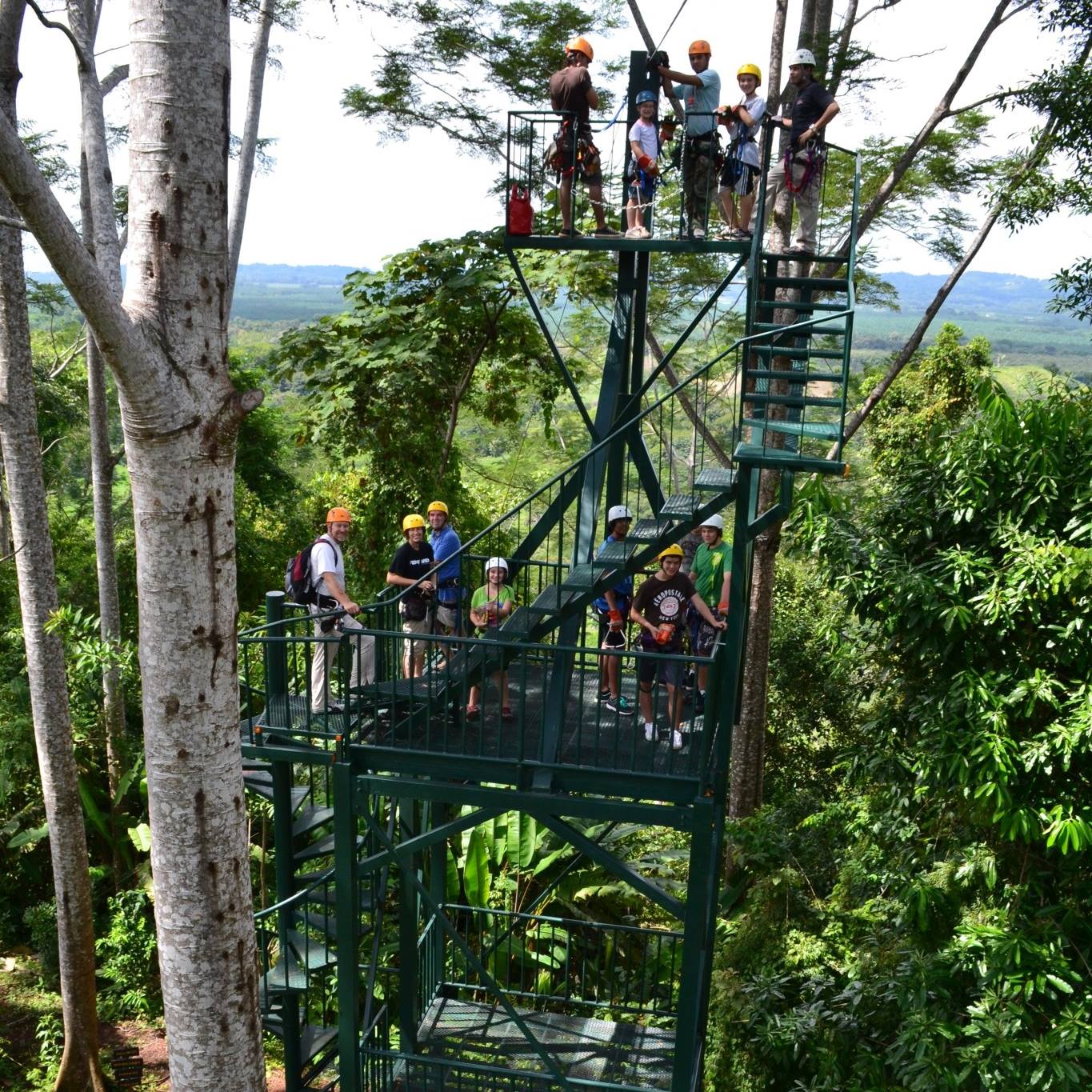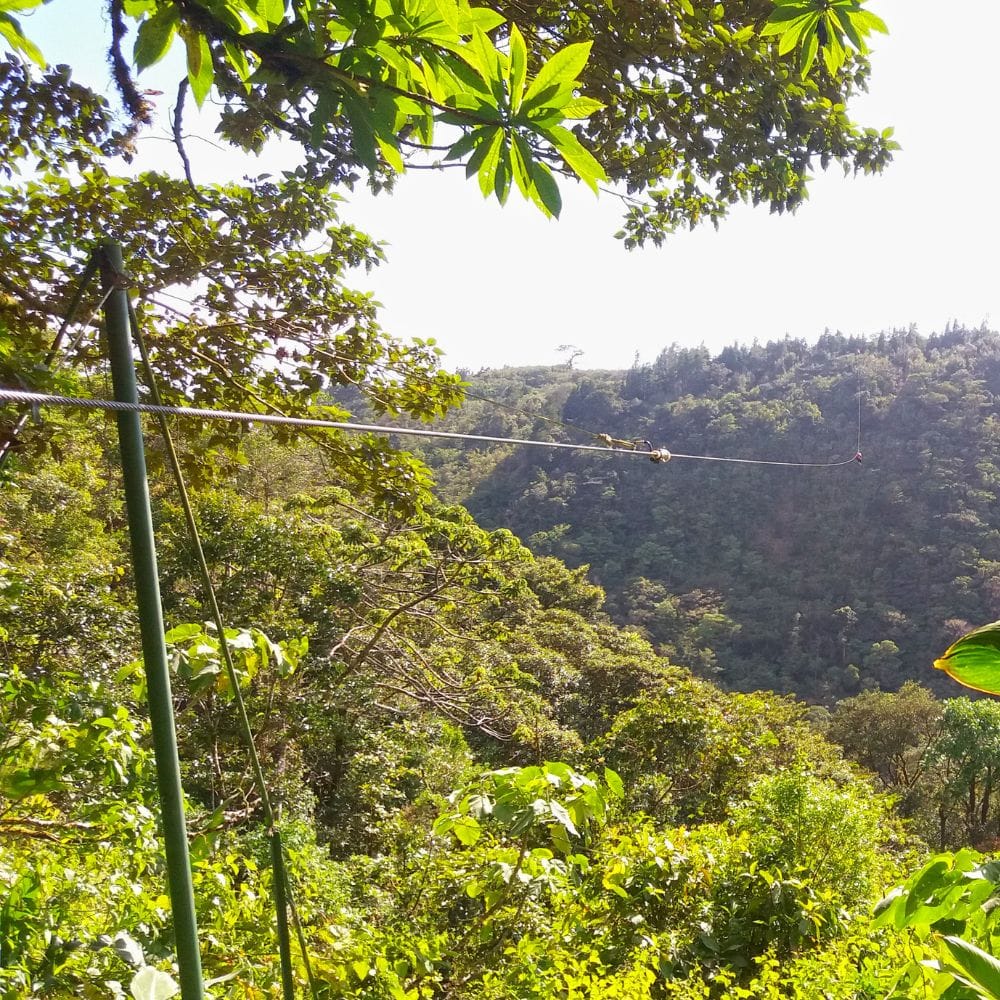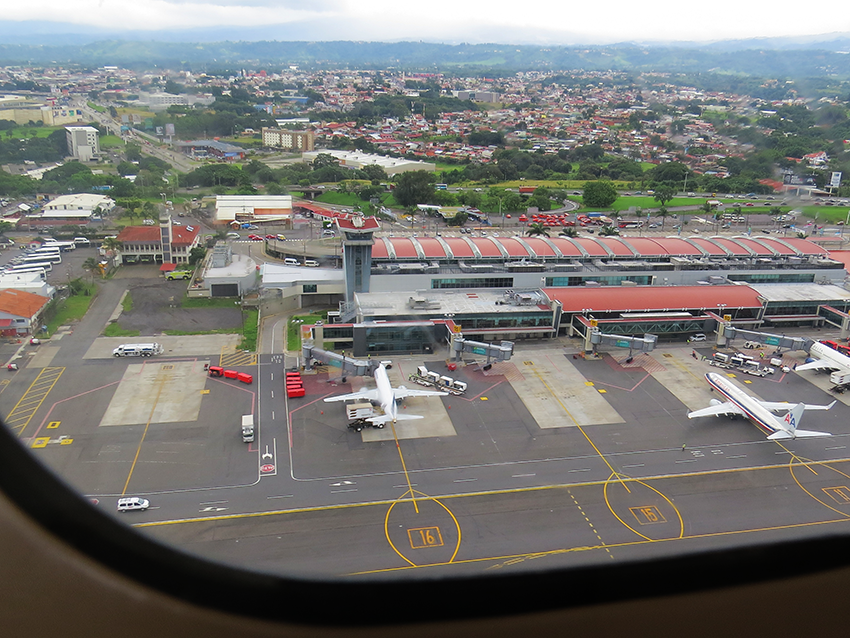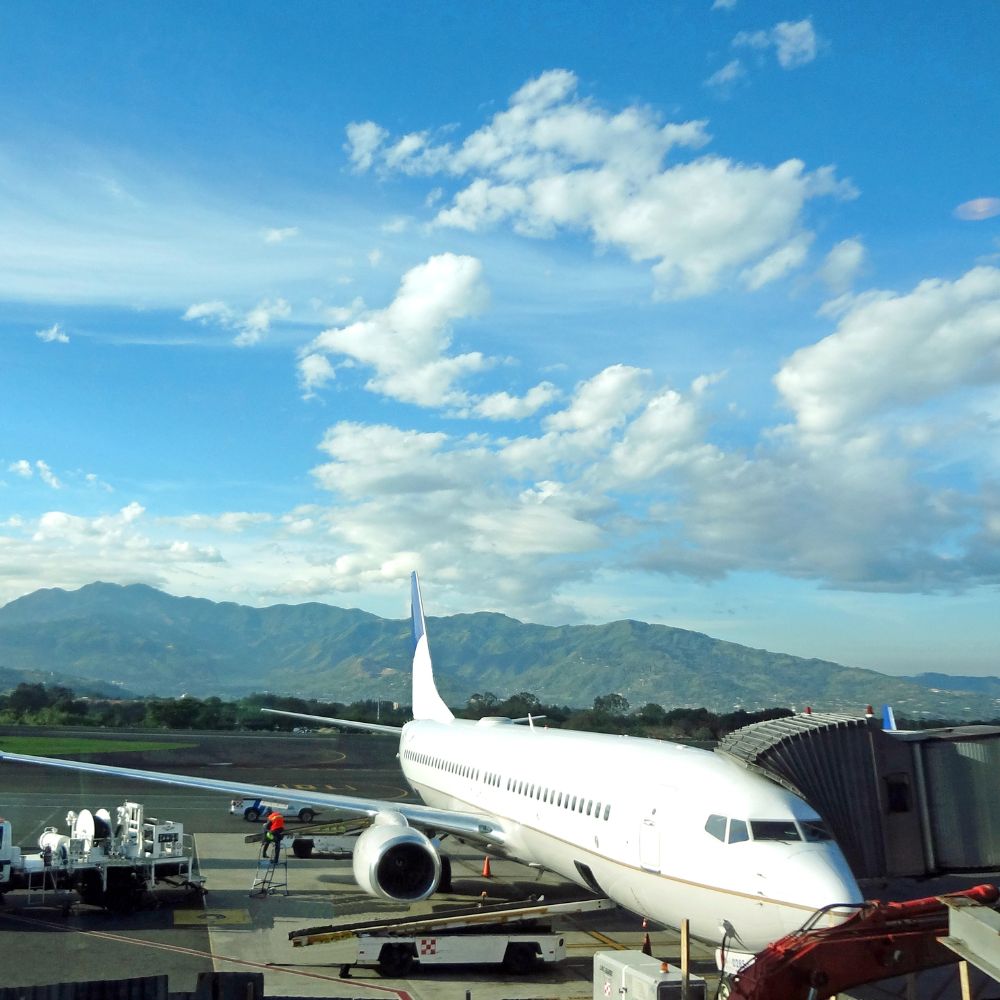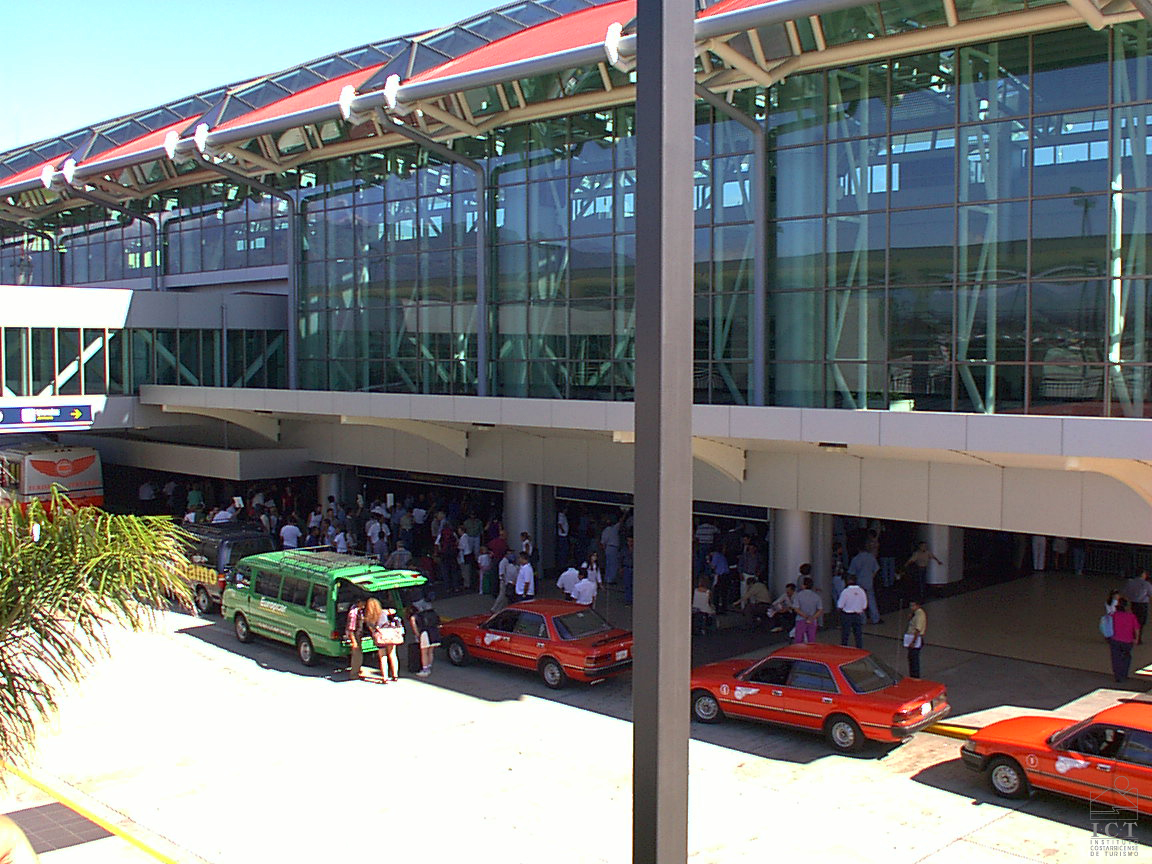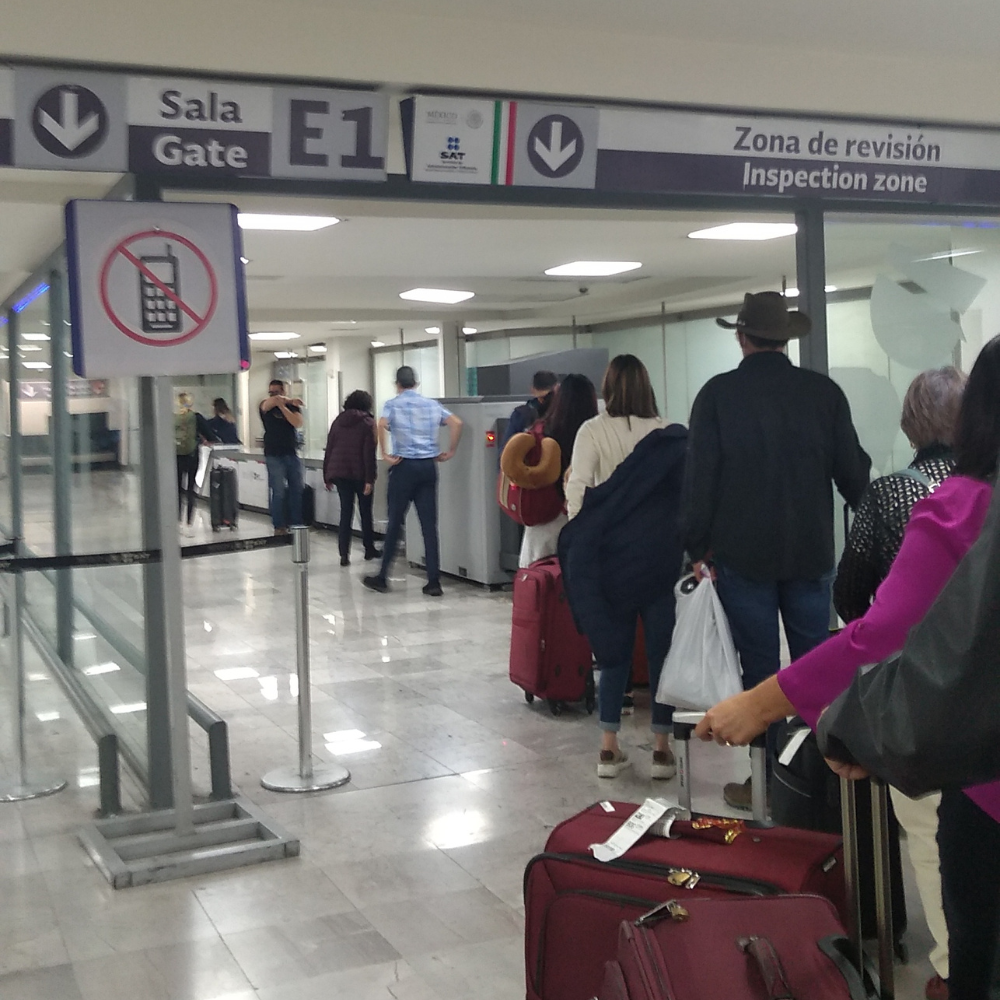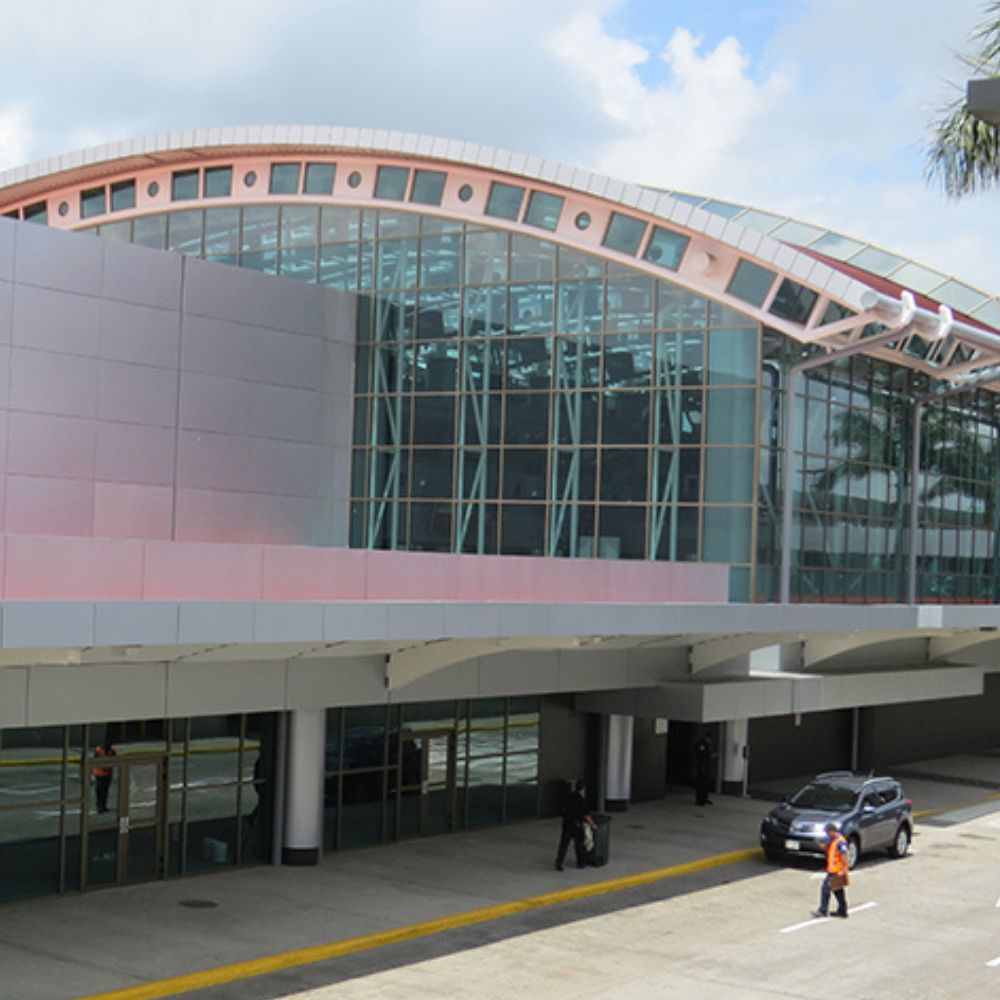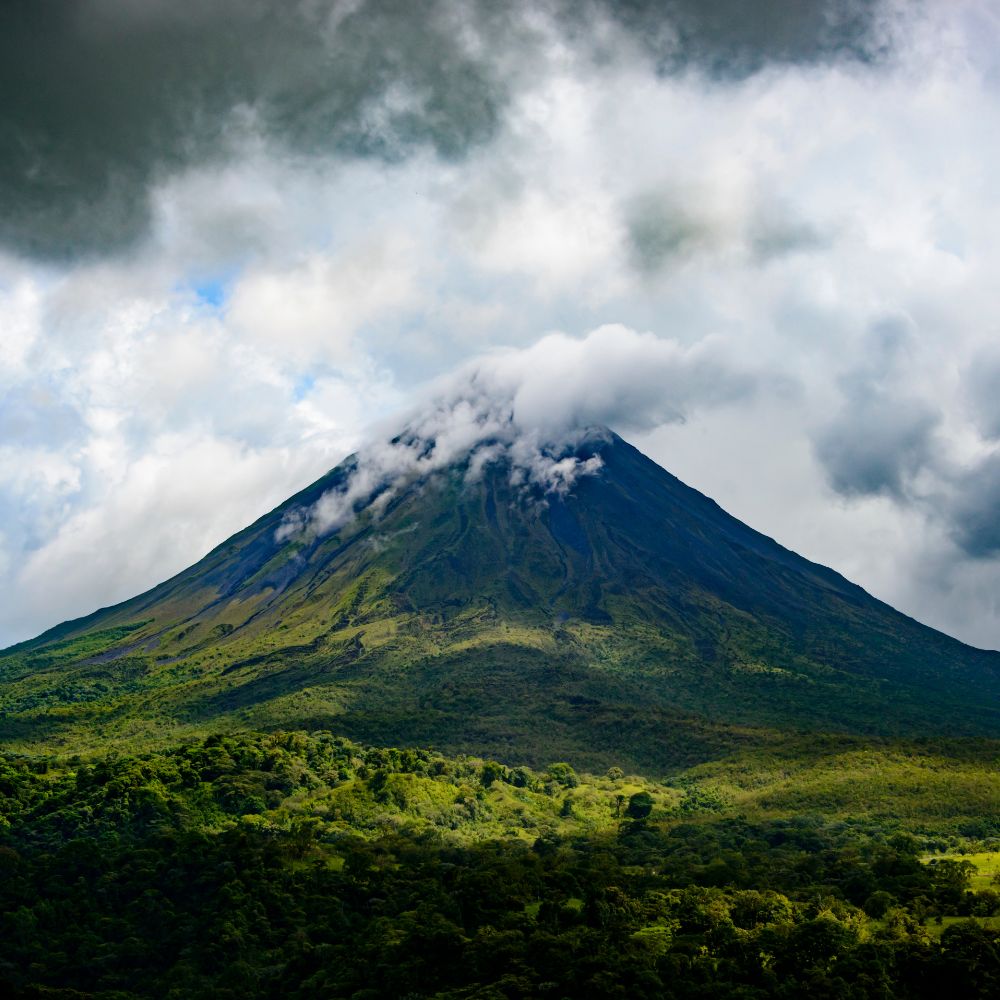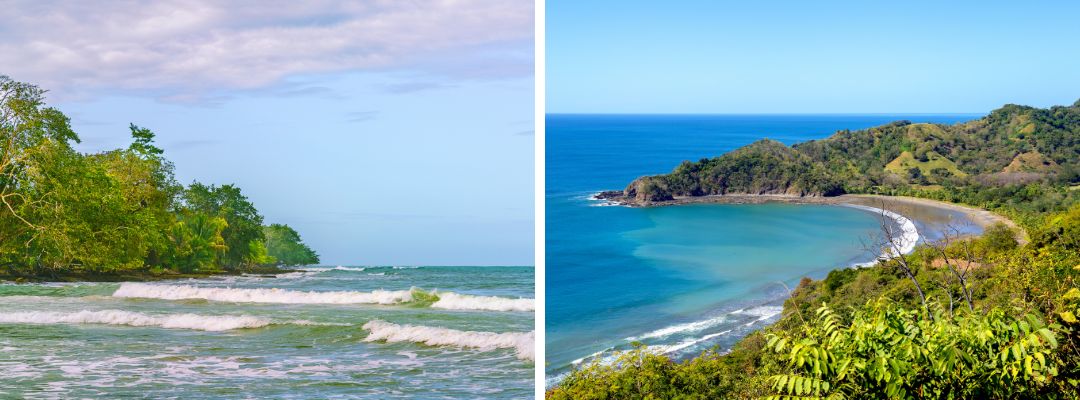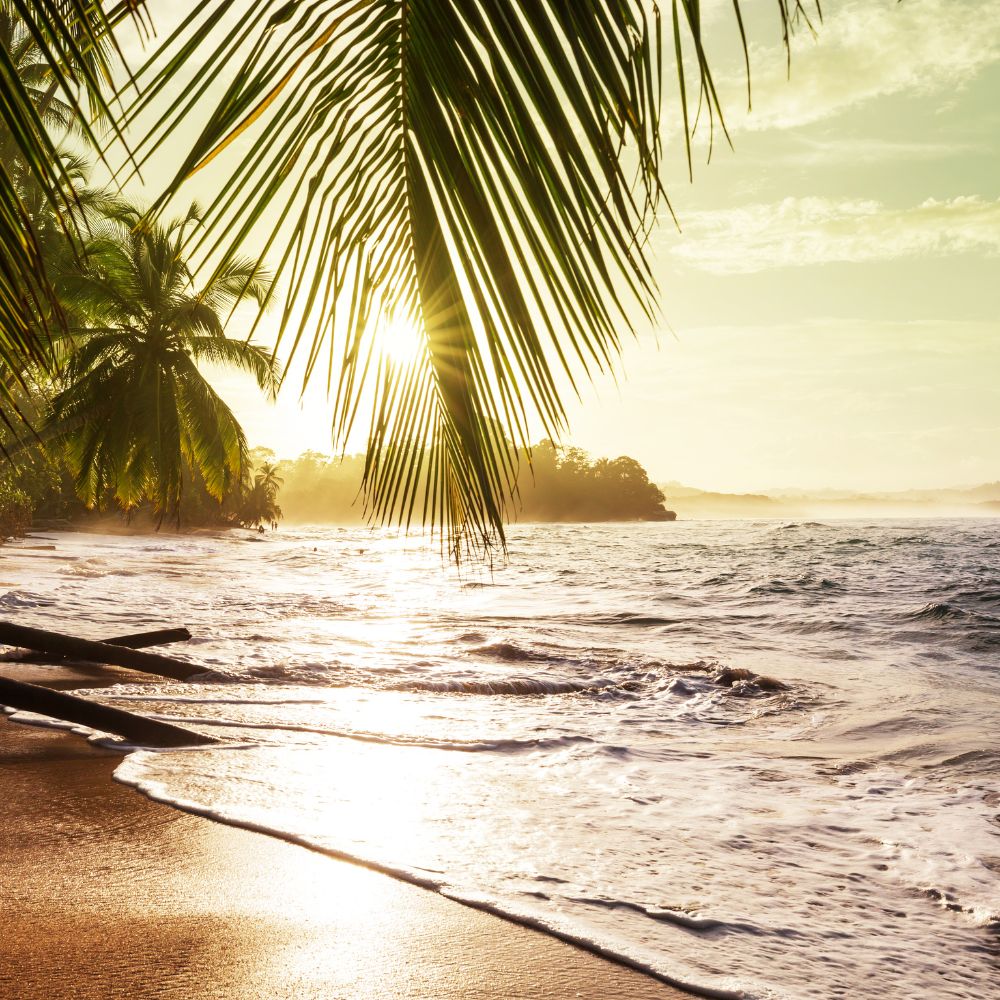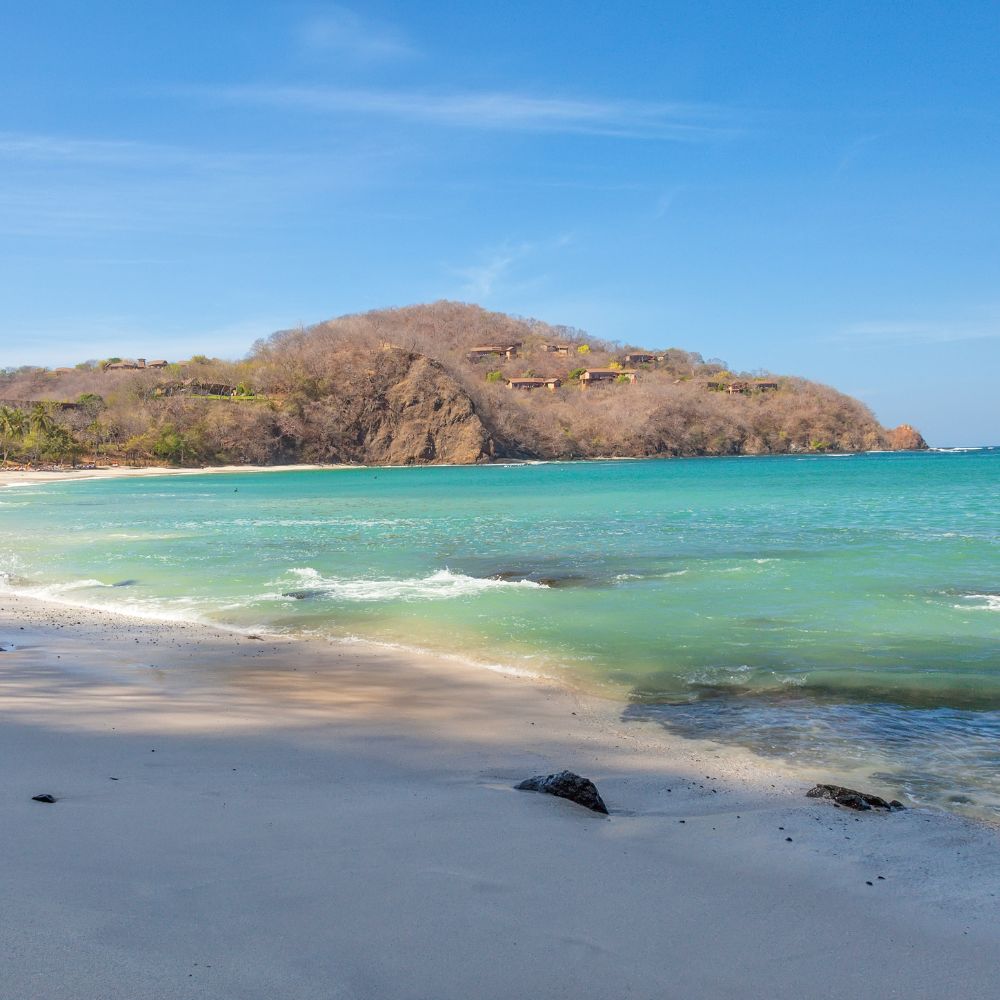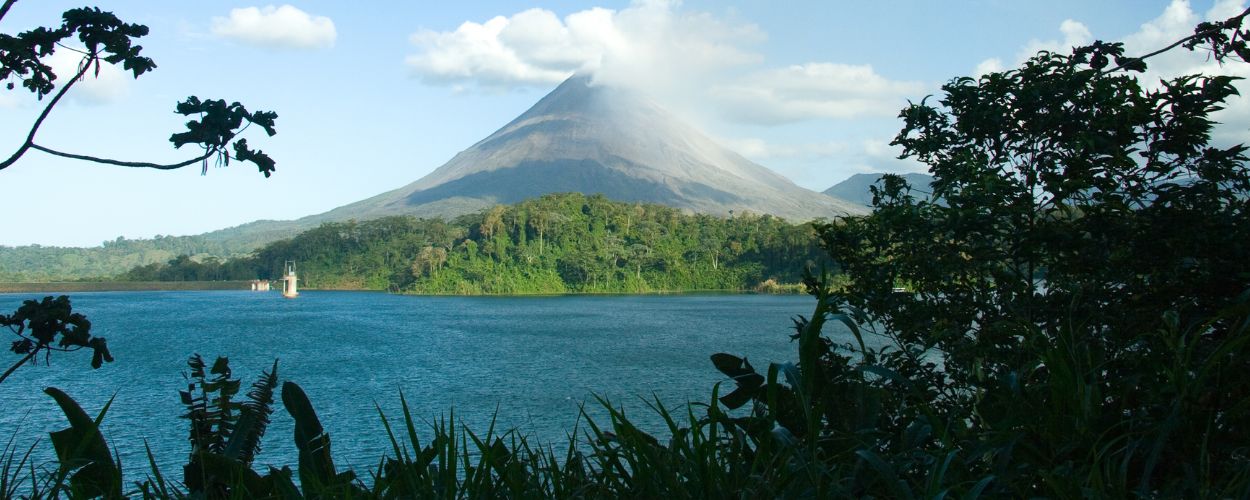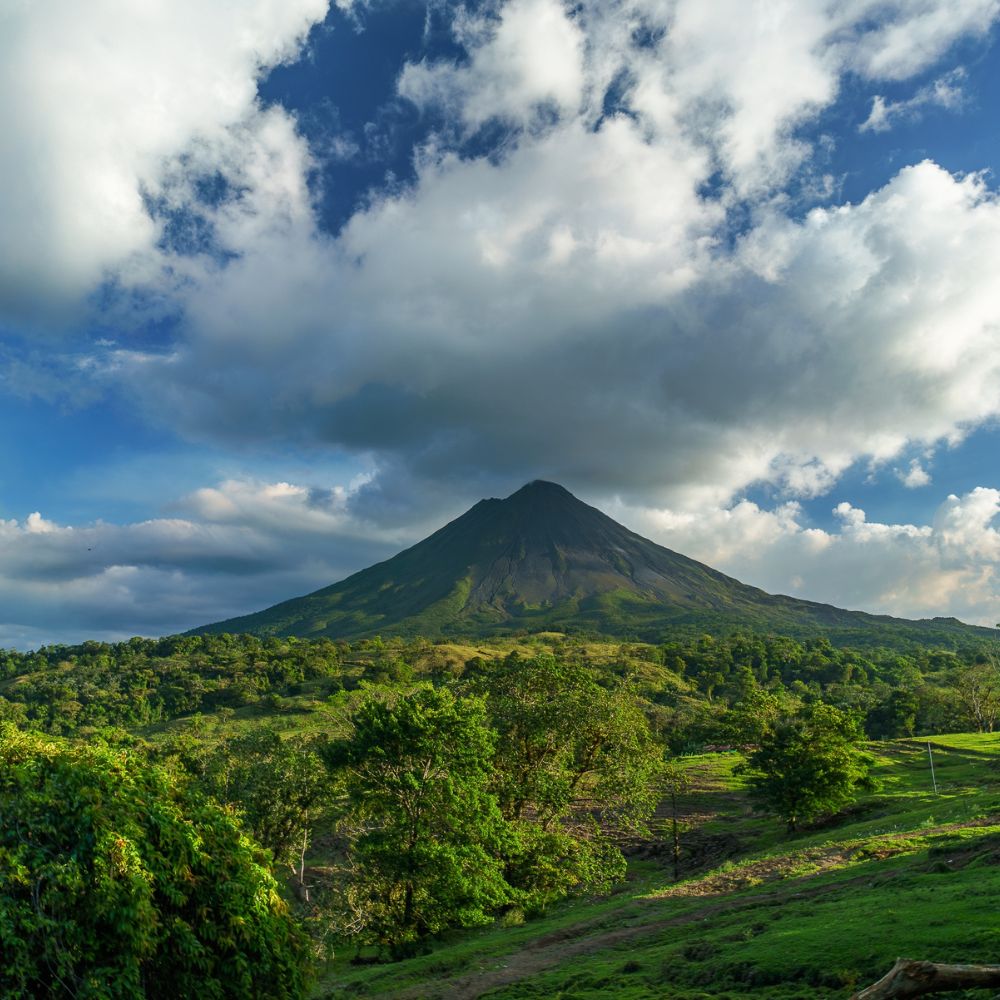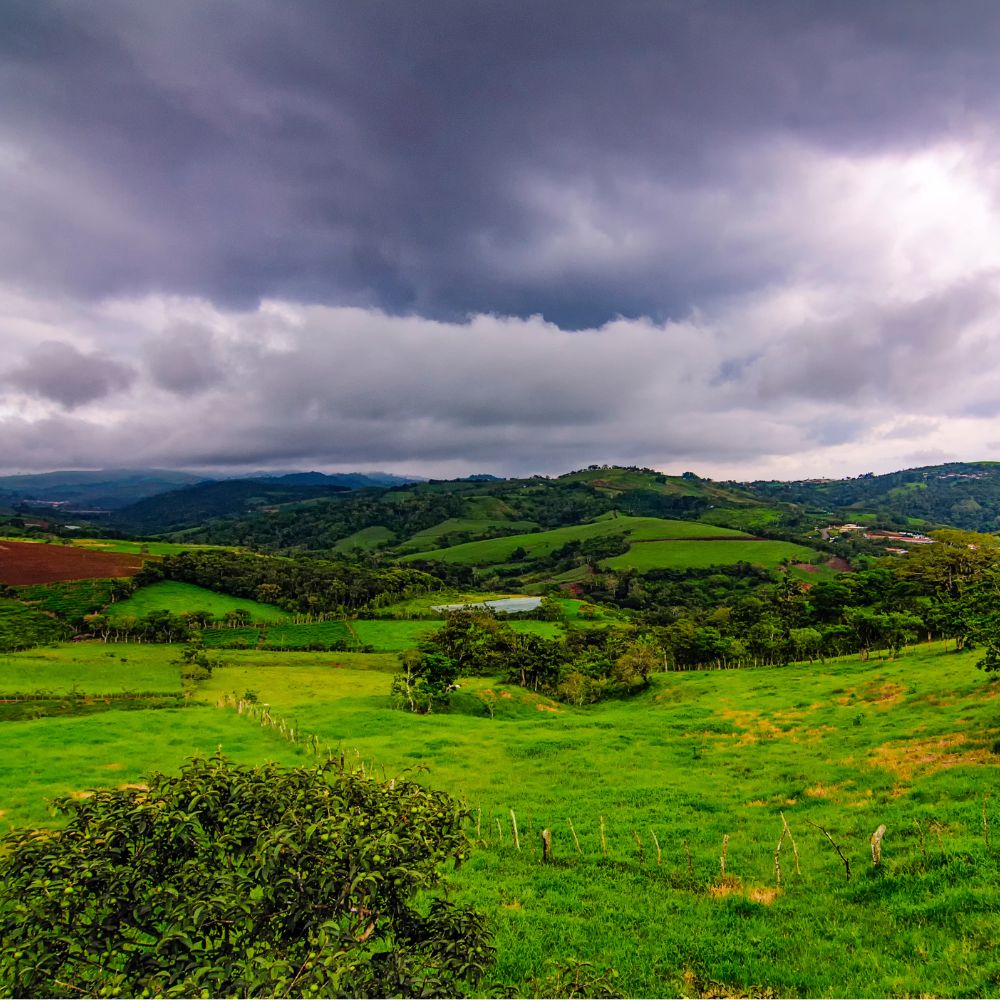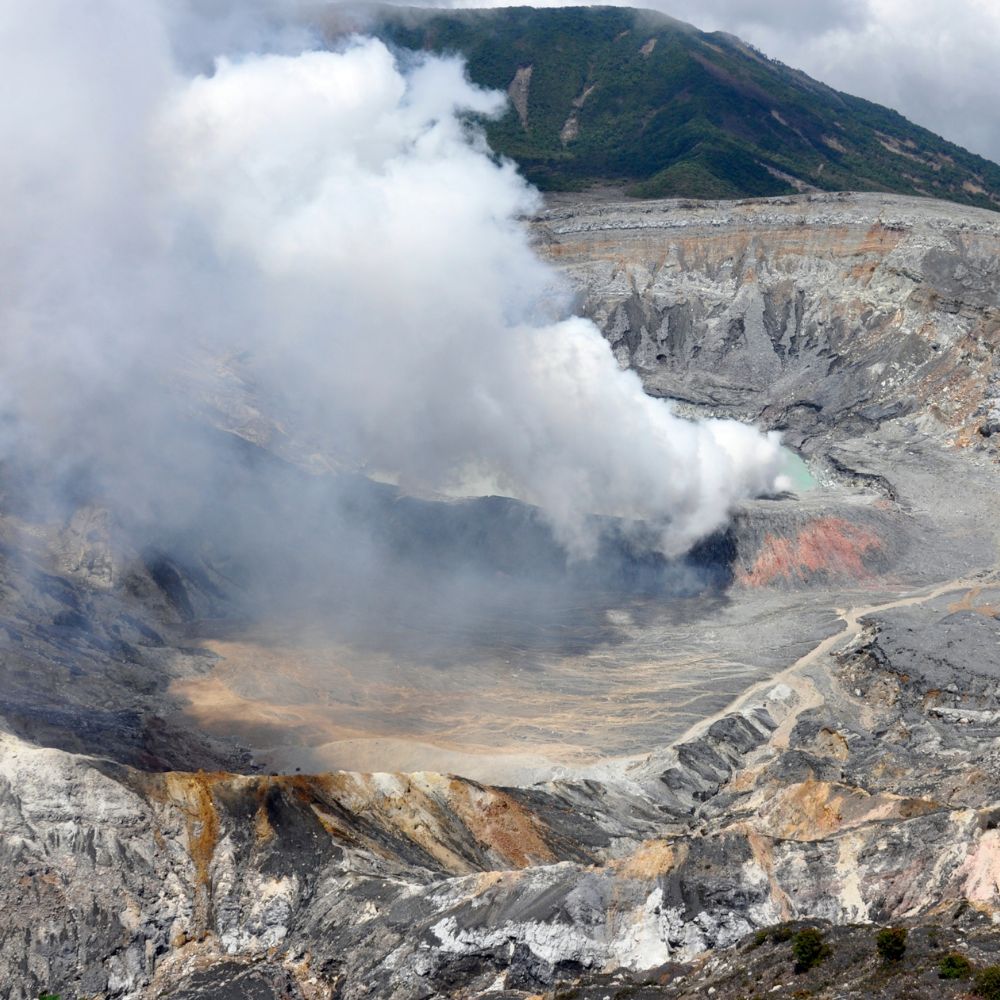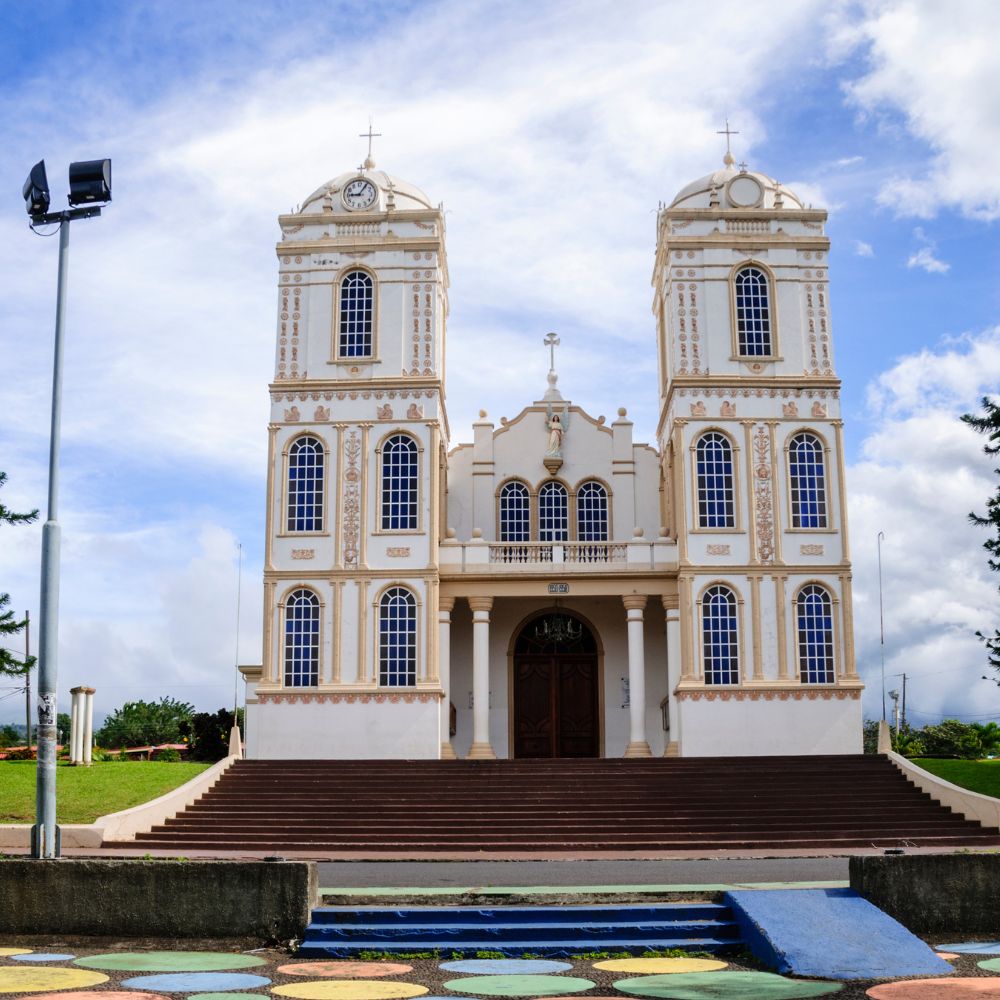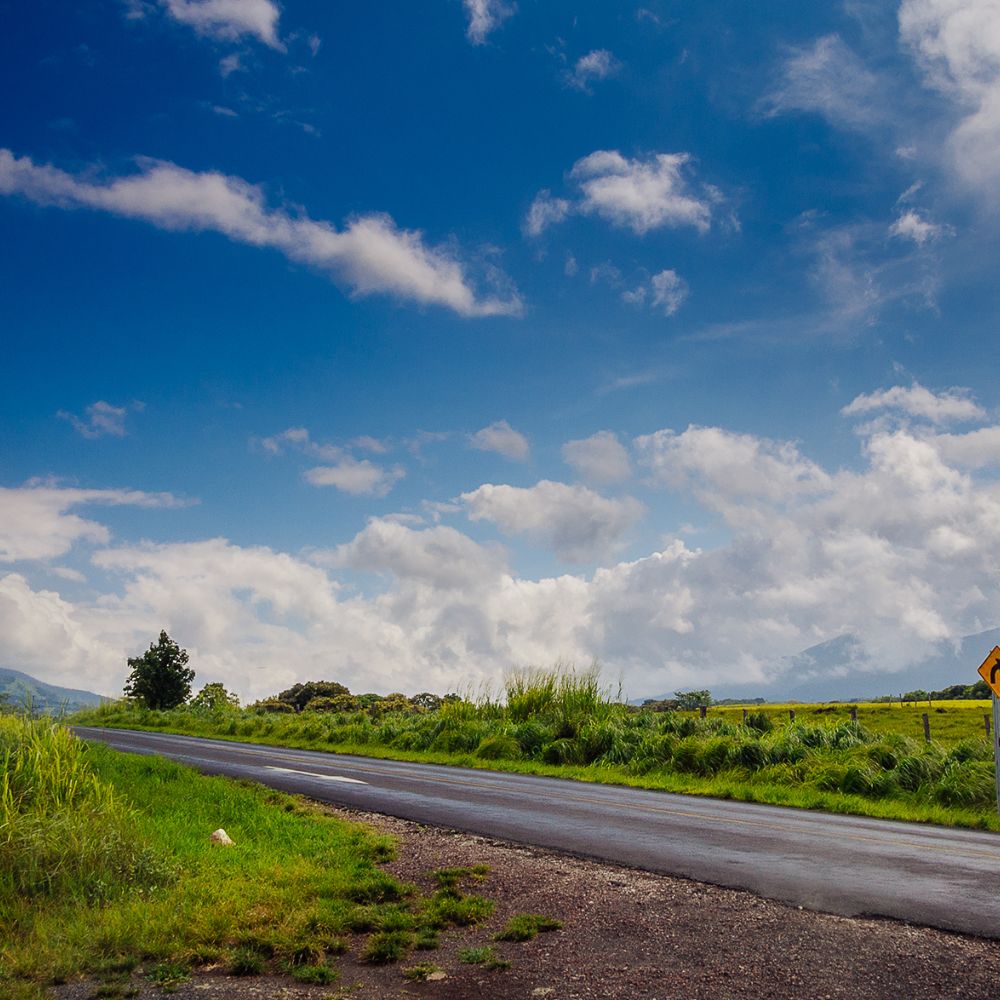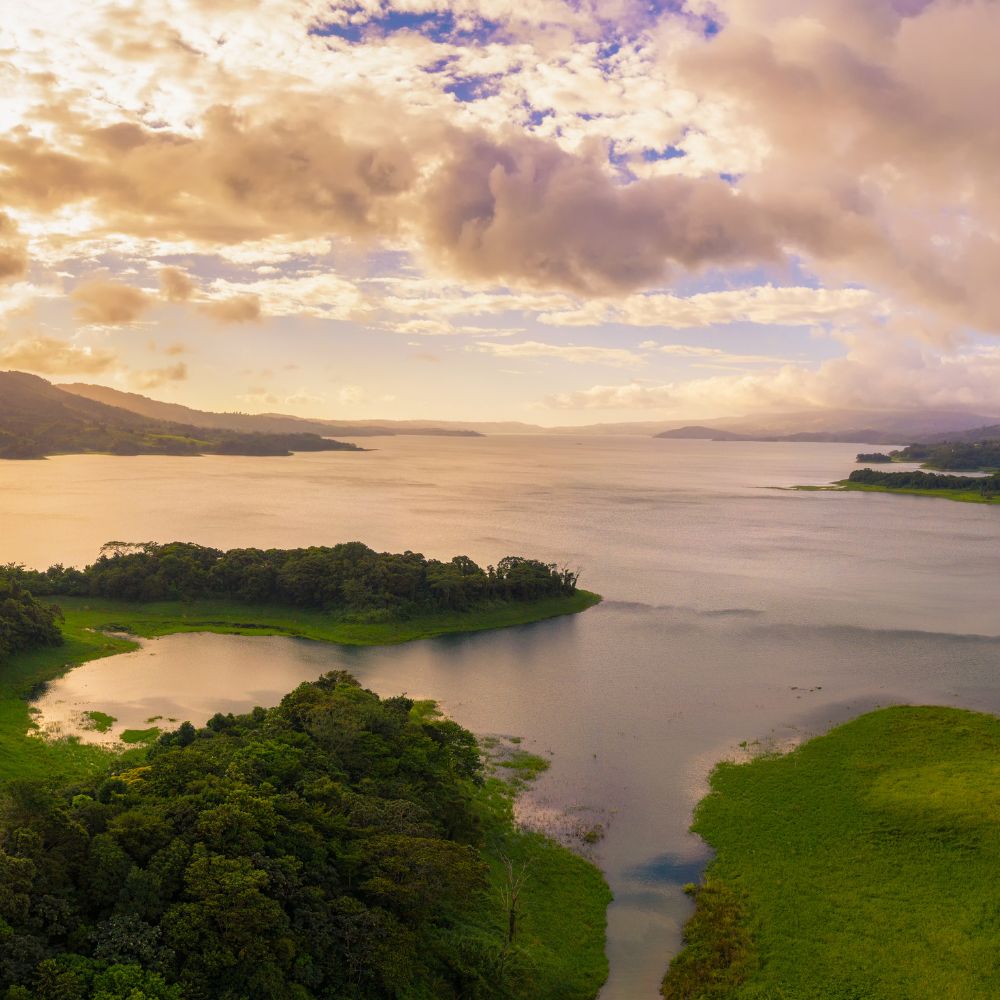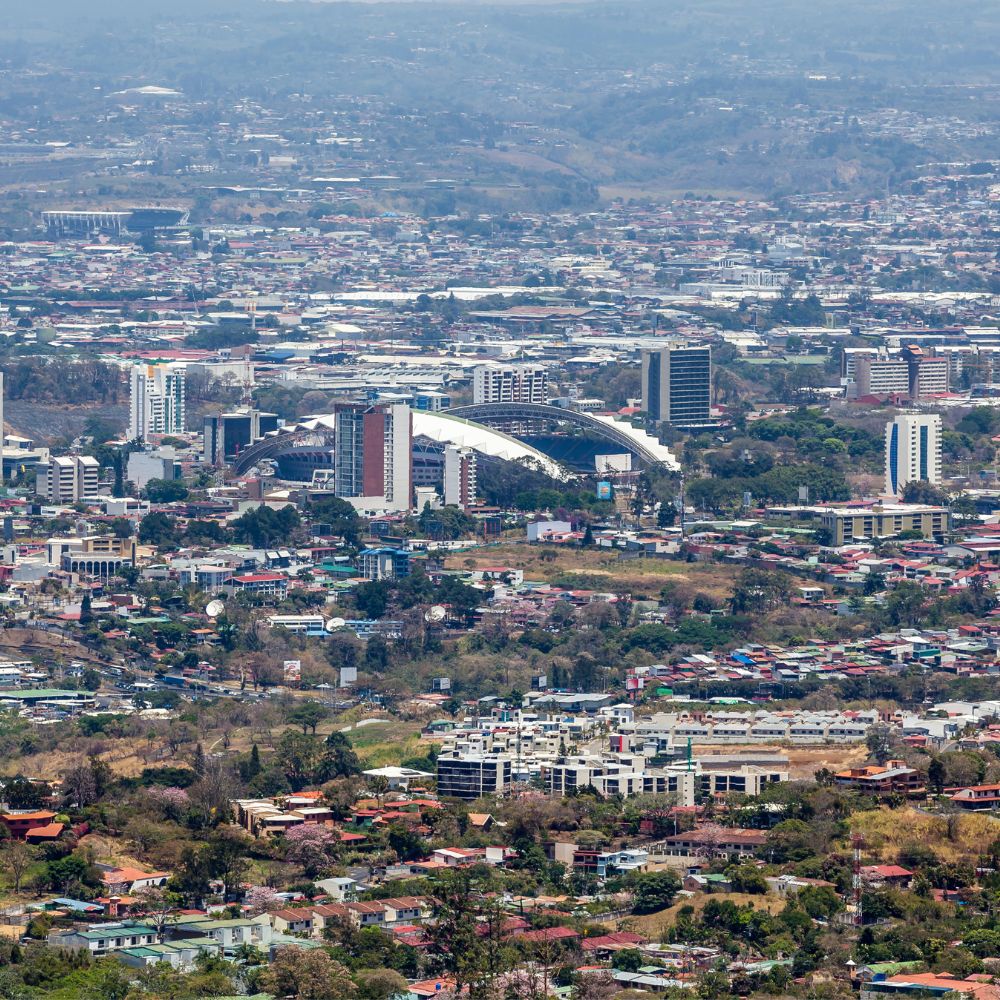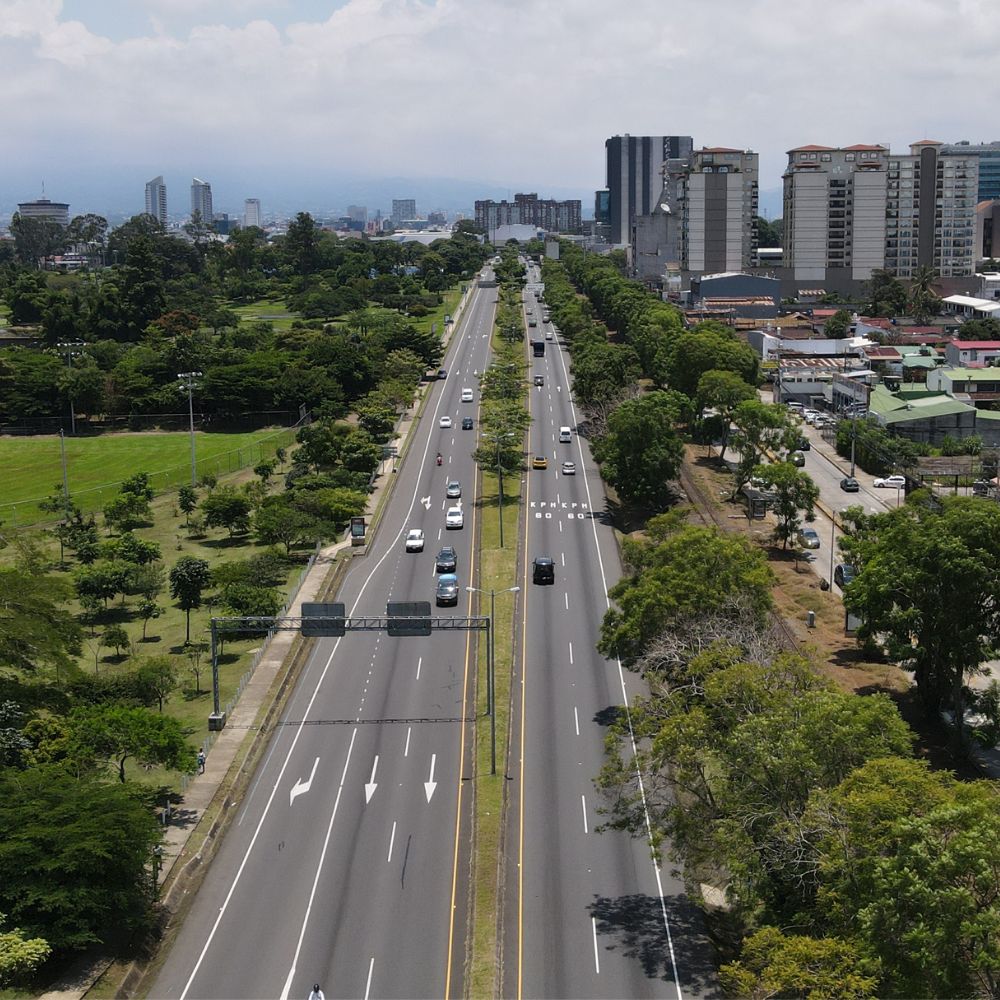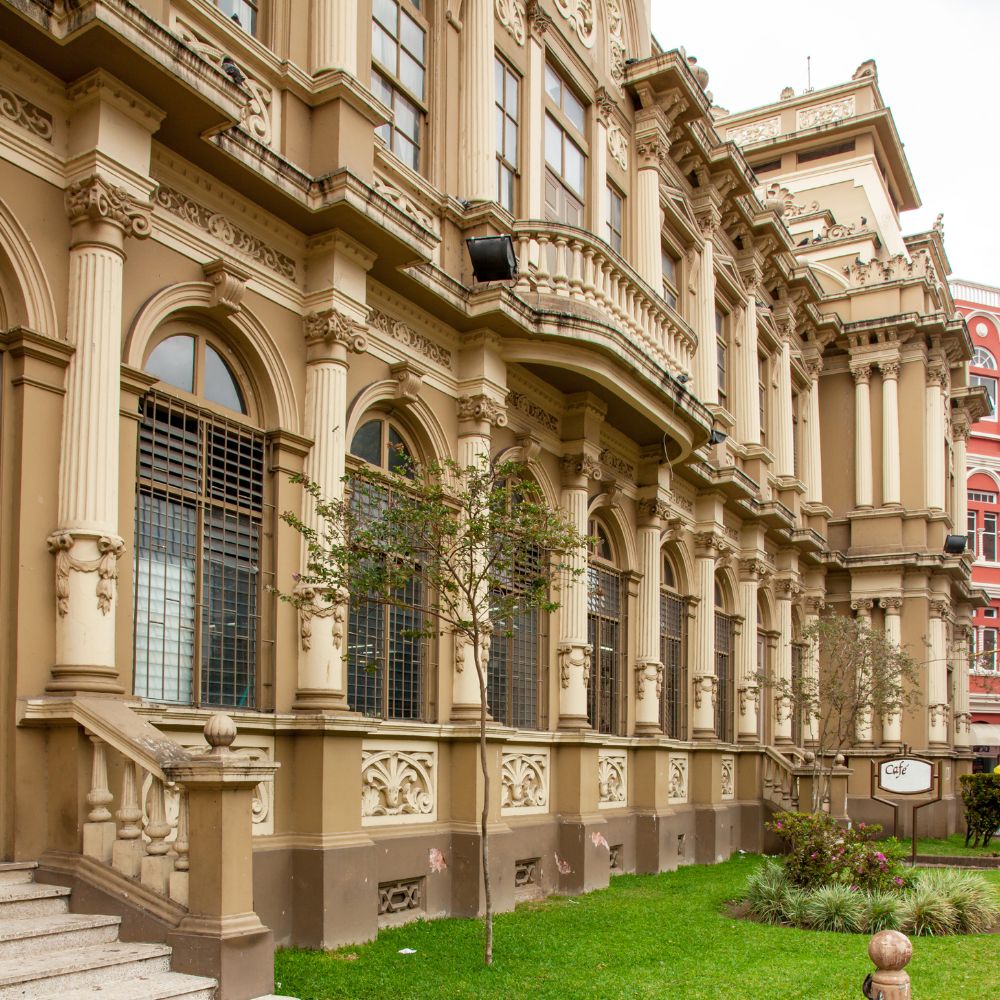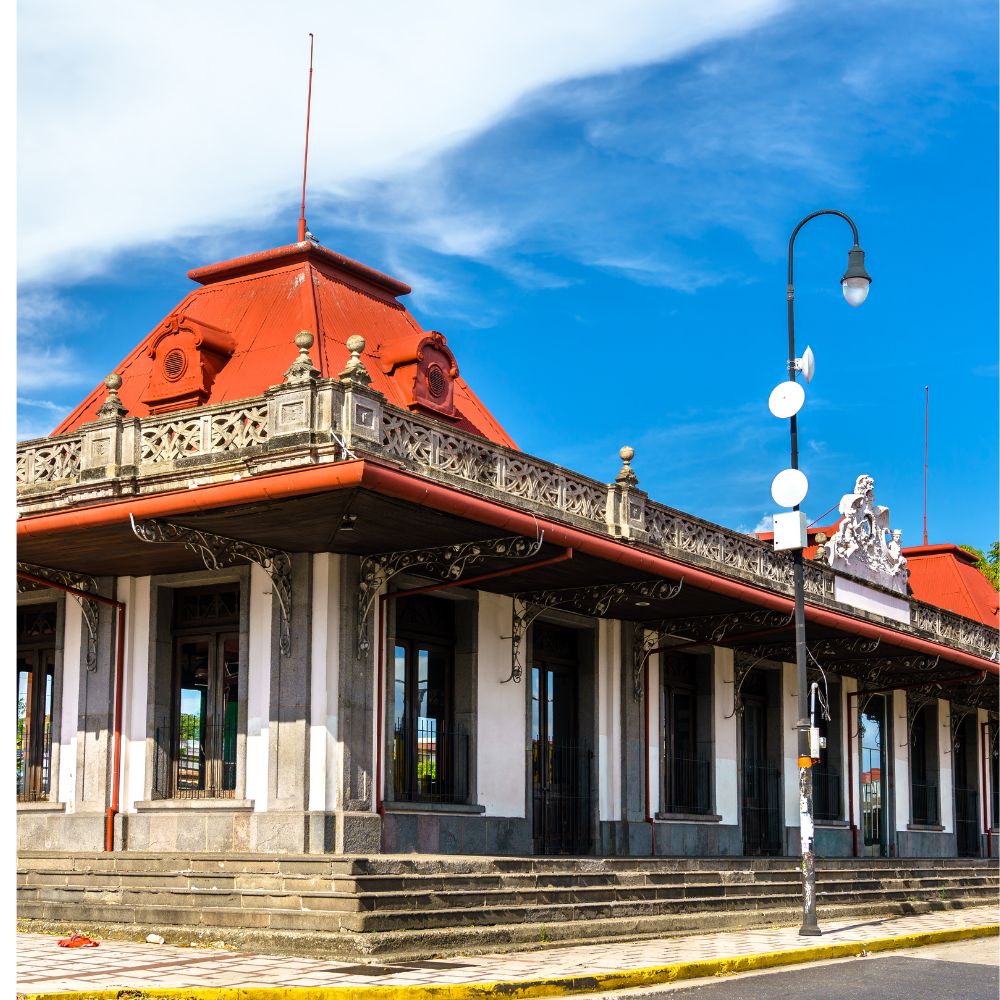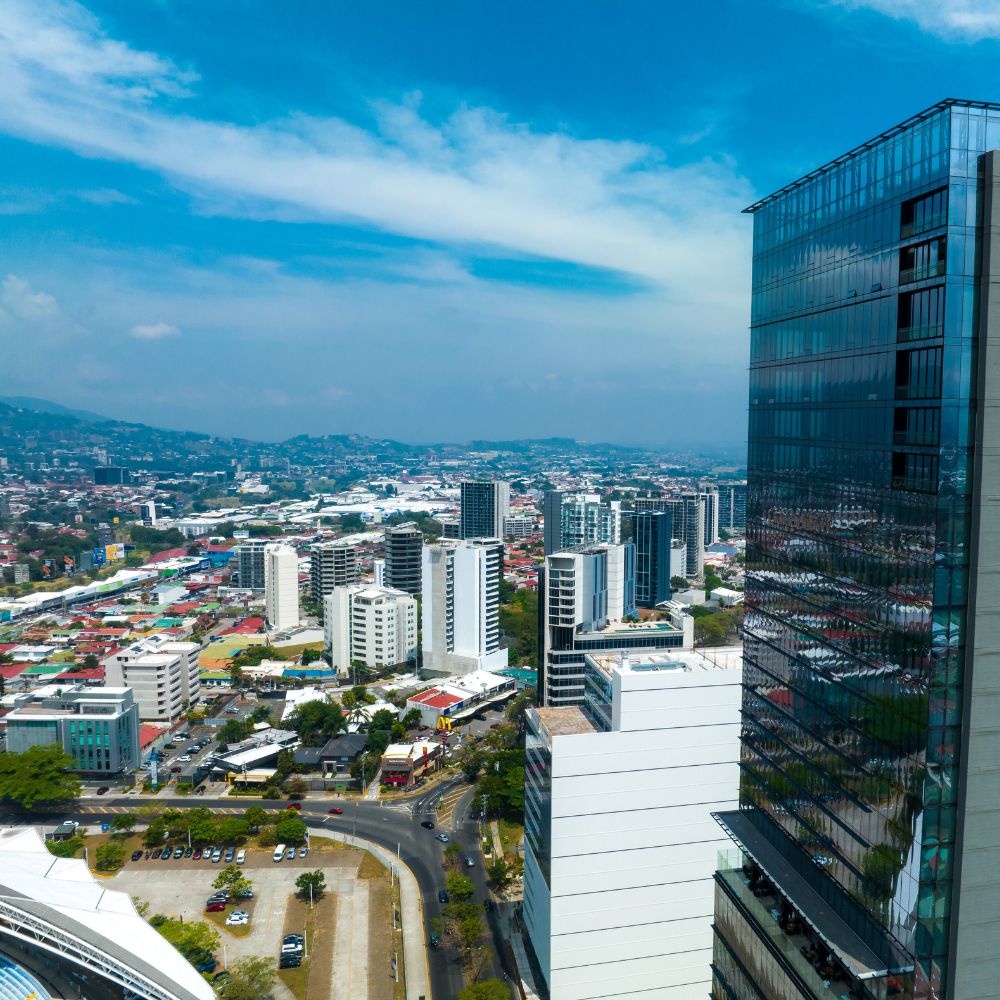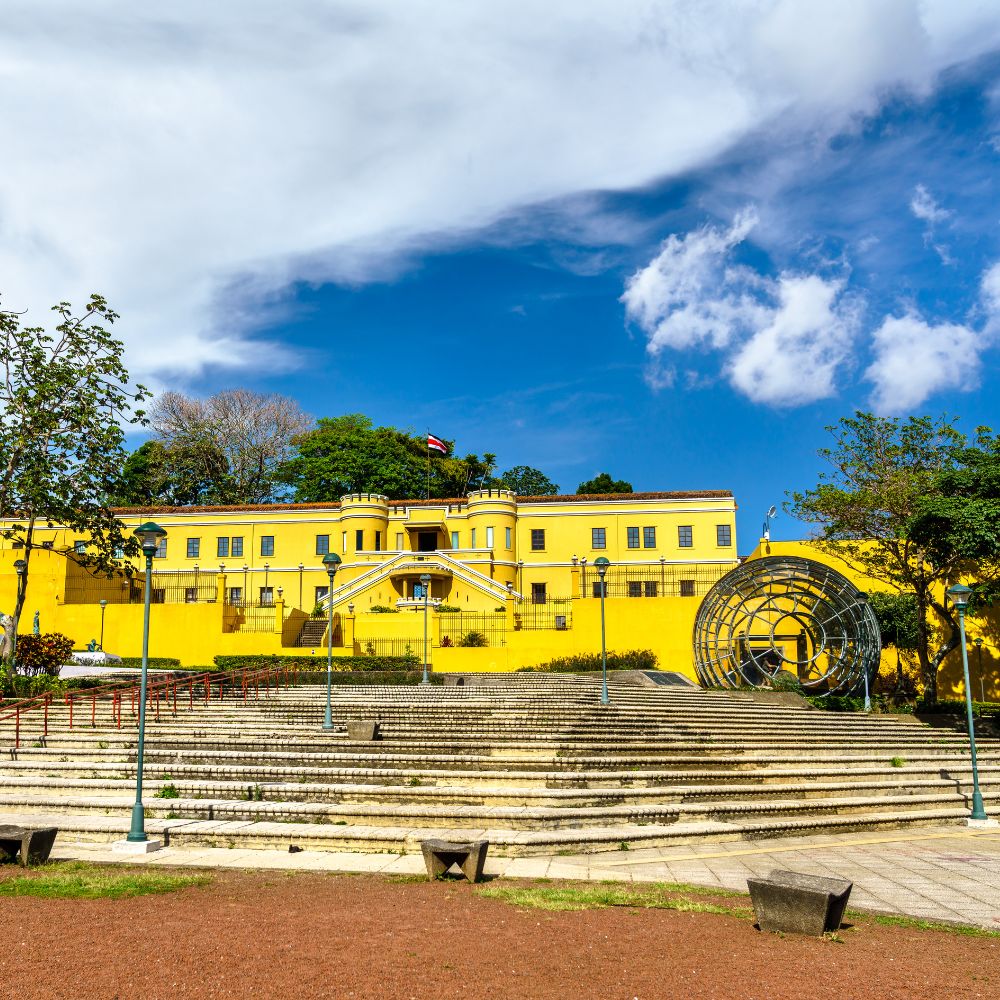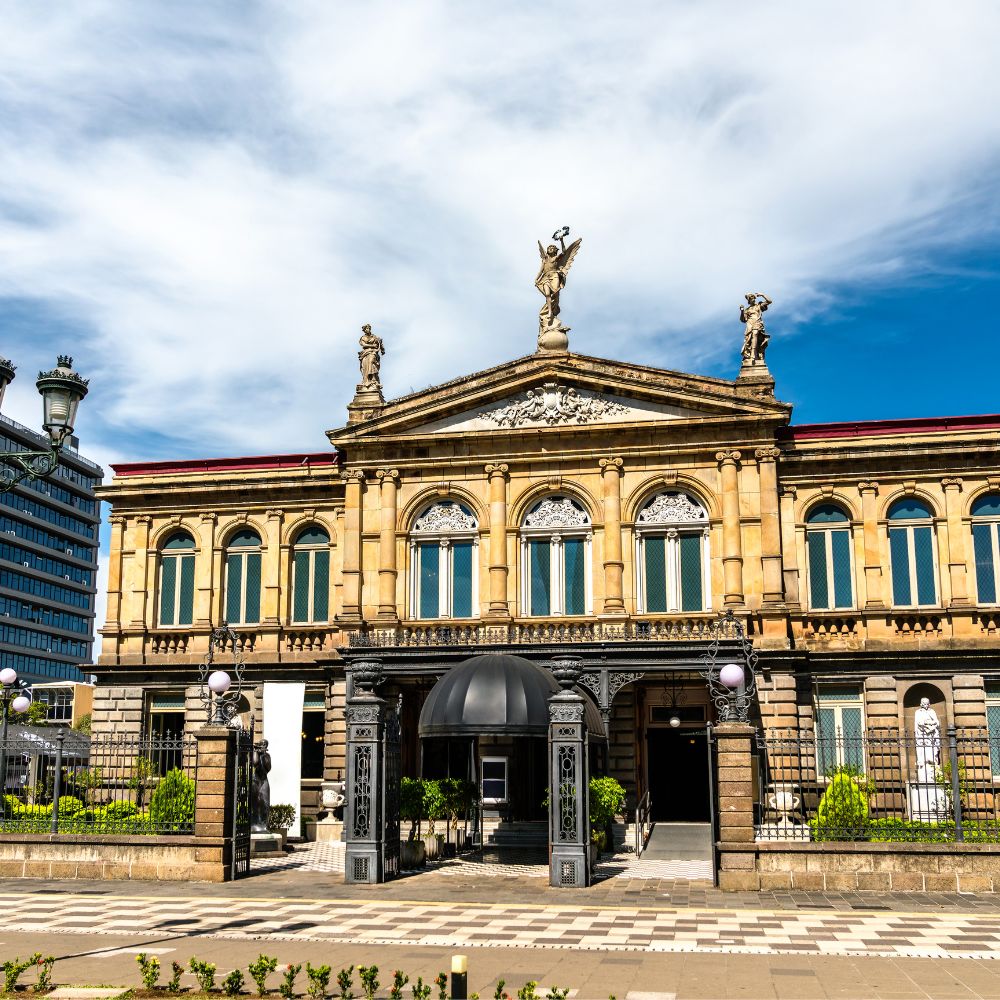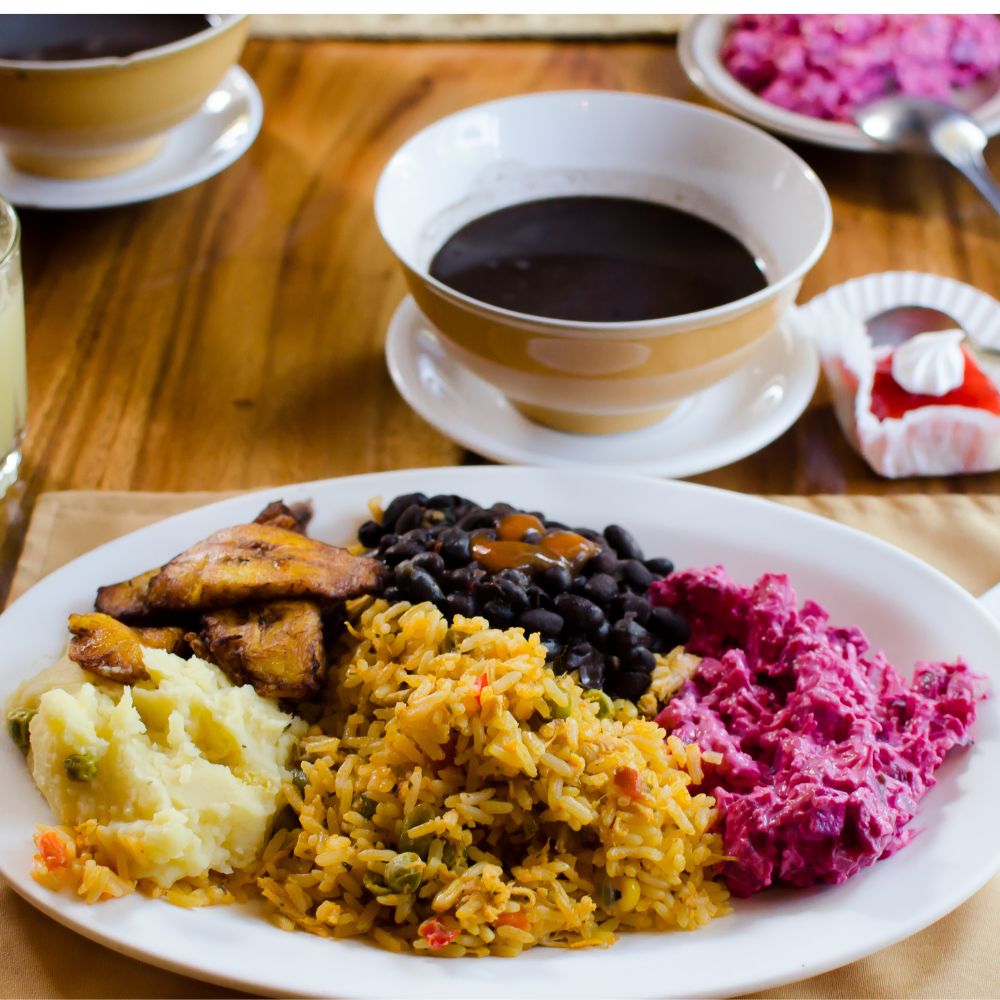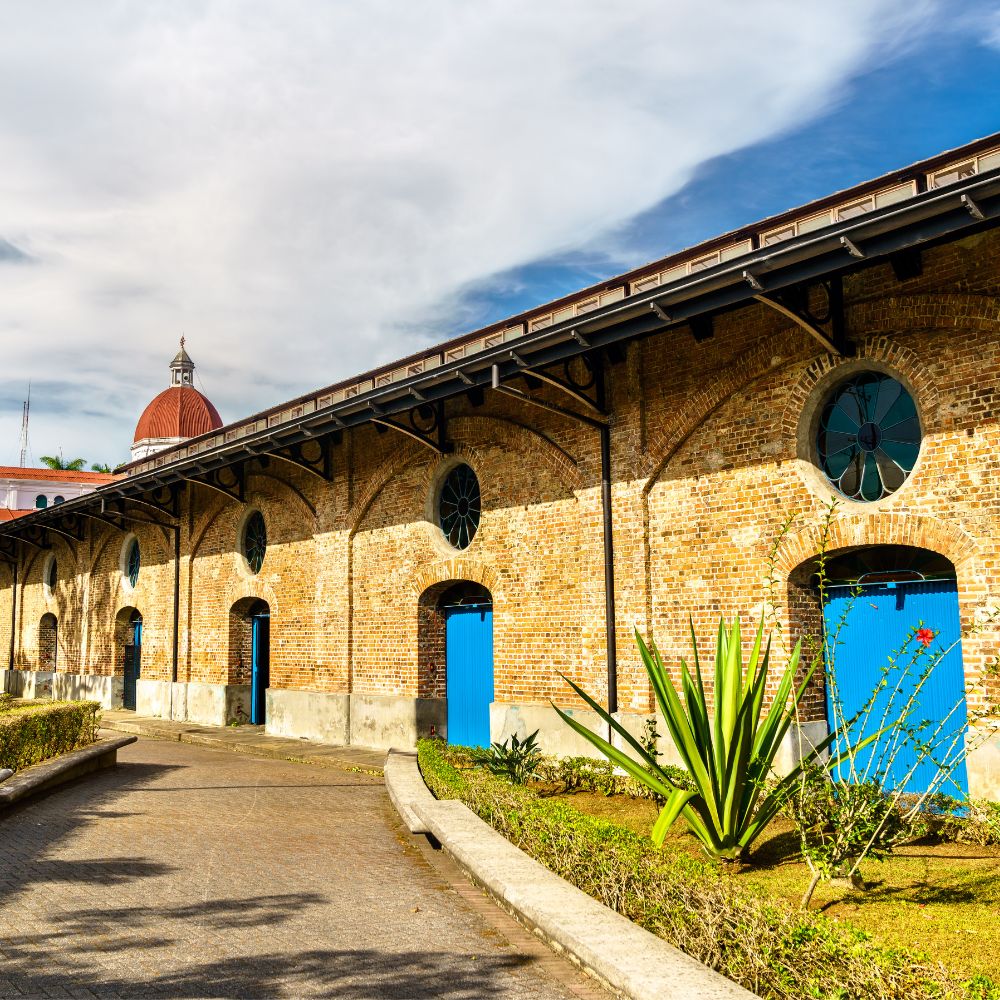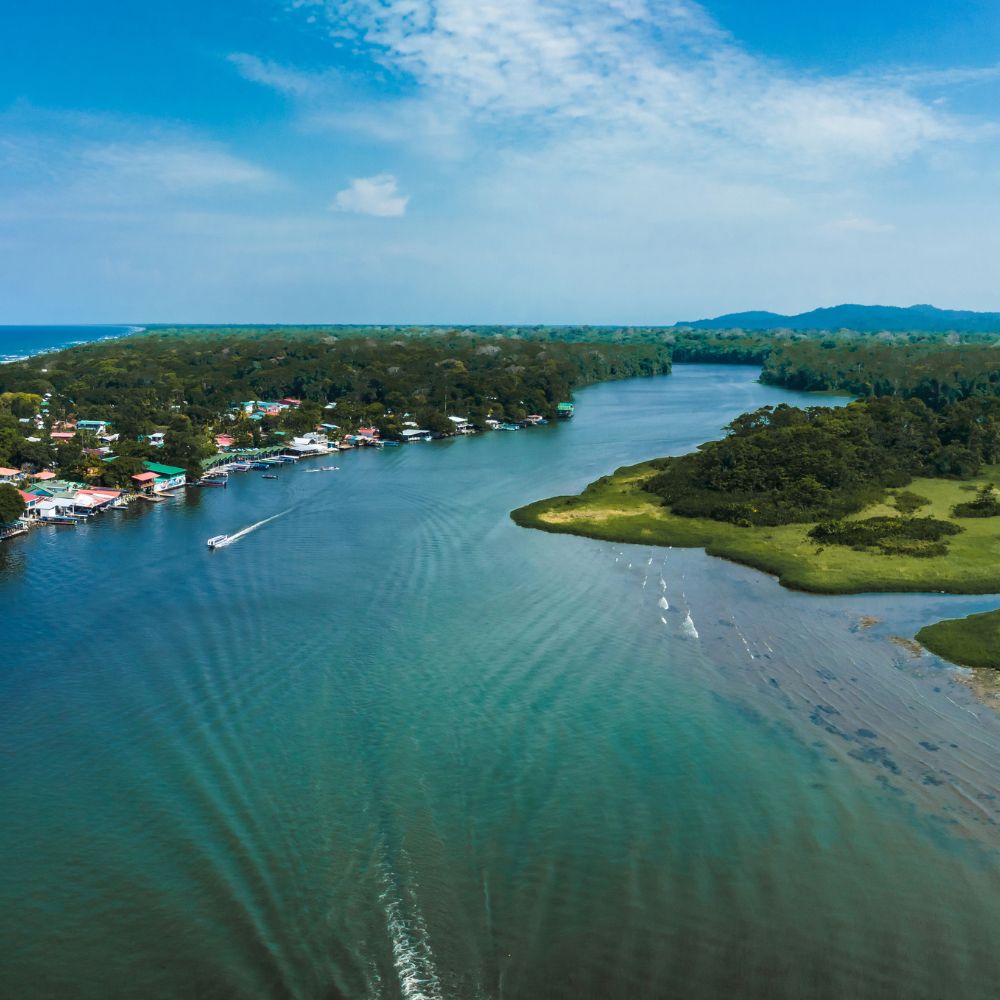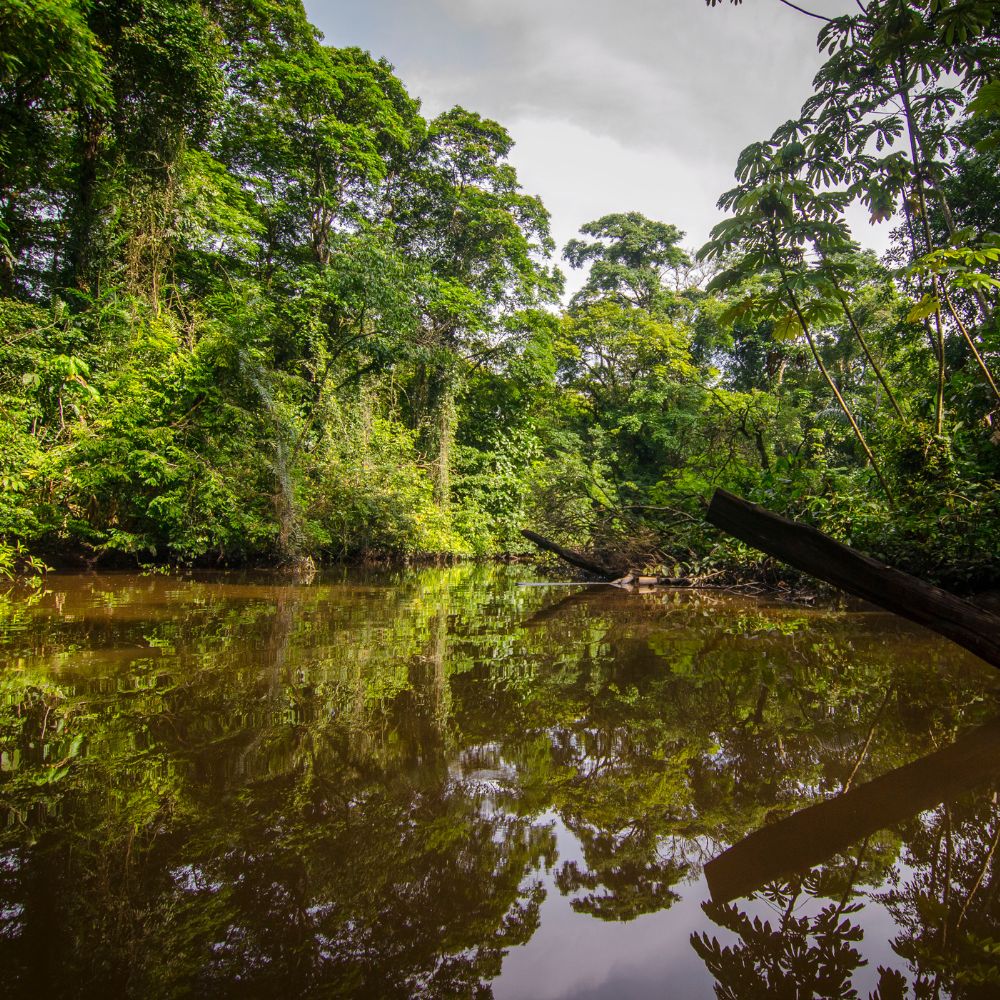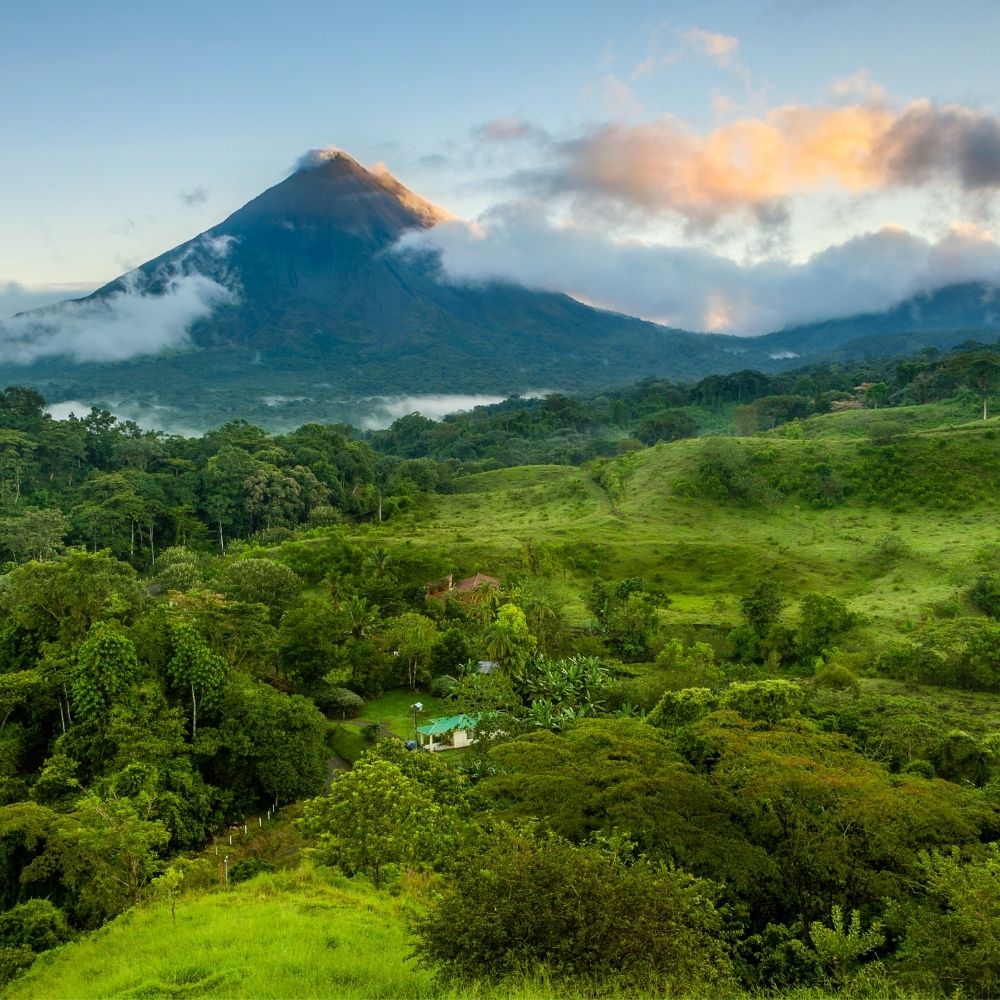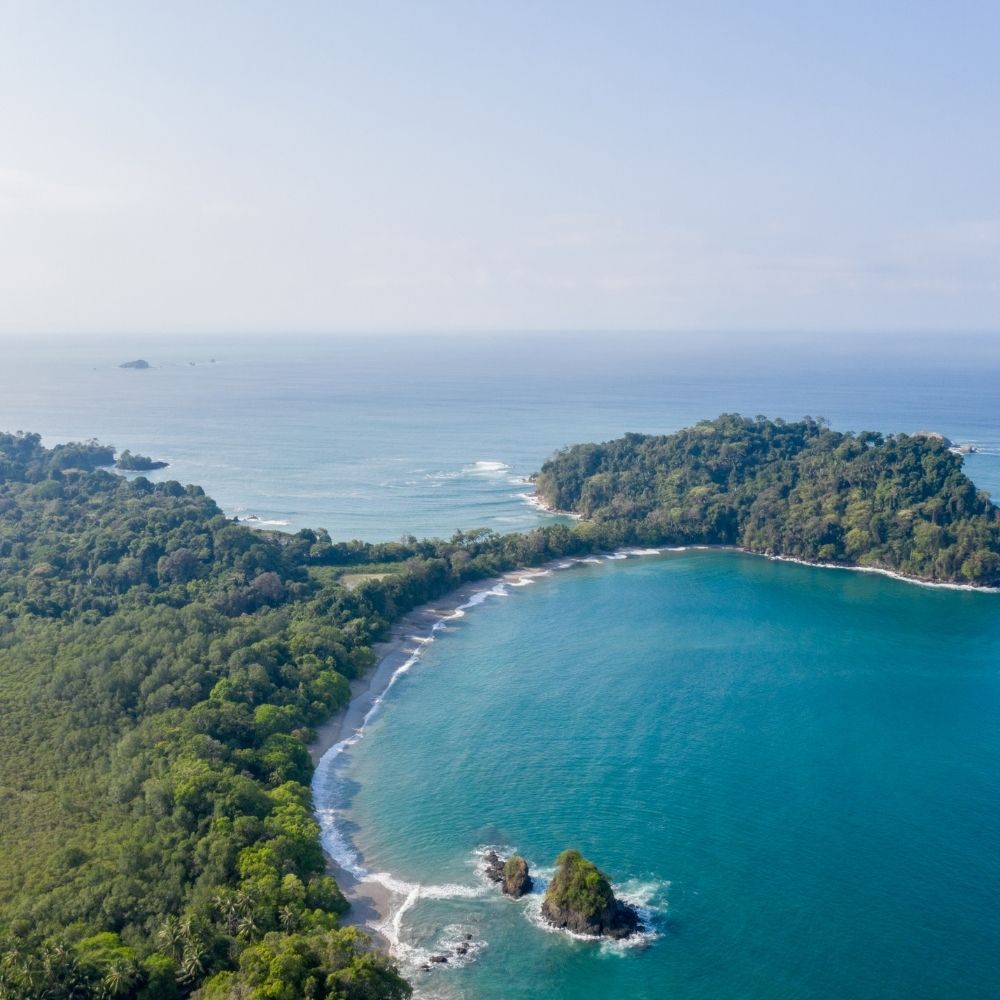Discover Monteverde Cloud Forests, one of the must-visit places in Costa Rica, renowned for its lush greenery and vibrant biodiversity. This remote paradise offers unique experiences, from stunning hikes to thrilling zip lines, making it a top destination for nature lovers and adventure seekers alike.

Find here a summary of the podcast Must see places in Costa Rica, extracting the podcast section where I speak about Monteverde. Down below is the whole transcription.
The Challenge of Access
Before I dive into Monteverde, it’s essential to understand why it is sometimes included in itineraries and sometimes not, although it is definitely one of the must-visit places in Costa Rica.
The main reason is that the roads leading in and out of Monteverde can be quite challenging. Similar to Tortuguero, it’s a remote place, breathtakingly beautiful, and home to one of the most thriving and progressive communities I’ve ever experienced. But the access even now, when the main road is paved, is quite hard.

I had the privilege of living in Monteverde for the entire pandemic, and this place is unlike anything I’ve encountered. I plan to create a podcast about it because it’s truly worth sharing. However, getting there and leaving can be quite difficult. If you have the time, it’s definitely worth including in your plans.
Plus, being in the mountains means it can be chilly; you’ll need a sweate and likely a rain poncho. Waterproof hiking shoes are recommended, as temperatures can drop. This is the primary reason why Monteverde is sometimes left out of travel itineraries.
Personal Connection
I must admit, I am quite biased when discussing Monteverde. I fell in love with the area, its community, and its people during my time there.
Location
So, where is Monteverde located?
It sits in the Cordillera of Tilarán, which is part of Guanacaste. It lies between the central volcanic mountain range and the older Guanacaste mountain range.
It’s about three and a half to four hours from both San José and Liberia. Whether you fly into one airport or the other, the distance to Monteverde remains the same.
Community and Attractions
Monteverde is one of the most popular must-visit places in Costa Rica due to its stunning beauty. It boasts a unique community of scientists, artists, and a conscientious conservation population.
In Monteverde, similar to Arenal, there are various areas to stay depending on your preferences.

Areas to Stay
Monteverde itself is primarily a reserve. Unlike many destinations, it doesn’t have national parks; instead, private foundations own all the reserves. Notable ones include the Monteverde Reserve, the Eternal Rainforest, and the Santa Elena Reserve, along with smaller reserves like Curicancha, which are excellent for birdwatching and other activities.
Depending on your interests, you can choose between more crowded, touristy areas or quieter, wilder spots.
Layout of Monteverde
Let’s discuss the layout of Monteverde. Picture a linear path: at one end, you have the Monteverde Reserve, and at the other, the Santa Elena Reserve, which are interconnected. This imaginary line represents the main road through Monteverde.

Monteverde Town is close to the reserve, while an area known as Perro Negro (Black Dog) hosts some of the largest hotels. Although it’s touristy, it offers a few good restaurants. Continuing along this line, you reach Santa Elena, the first town you’ll encounter, which is small and charming, with plans to become entirely pedestrian-friendly. It features supermarkets, nice restaurants, and popular bars like Amigos Amigos, known for live music on weekends.
I wouldn’t recommend staying in Santa Elena unless you’re looking to enjoy the nightlife.
Activities and Attractions
After Santa Elena, you will head toward the Santa Elena Reserve, home to hanging bridges and various projects. This area also offers organic farms, coffee tours, chocolate tours, and sugar tours, with plenty of boutique hotels and Airbnbs.

Adventure Activities
There are numerous activities in Monteverde, including impressive ziplining and thrilling Tarzan swings. If you’re a hiking enthusiast, the trails in the Monteverde Reserve are a must-visit, though they can be pricier than those in Santa Elena. However, the beauty of the Monteverde Reserve is breathtaking, especially during the pandemic when it was less crowded.
In the Santa Elena Reserve, you’ll find the most strenuous hiking trail, which I highly recommend. If you’re interested in more details about hiking trails in Monteverde, feel free to reach out via email or WhatsApp.

Night Tours and Waterfalls
The Monteverde area also offers fantastic night tours. Night hikes in Arenal and Tortuguero are particularly enchanting due to the sounds of the forest.
Monteverde features stunning waterfalls, with El Tigre being the best spot to experience them. It’s an unforgettable experience that you simply must have when visiting Monteverde.
Weather
Now, let’s talk about the weather. If you enjoy cool, misty climates, Monteverde is the perfect destination. However, if you’re escaping the cold, it might not be ideal.
I once met a Russian tourist who, upon arriving in Monteverde, remarked on his sweater, asking if he really traveled 24 hours just to wear it in Costa Rica. He quickly decided to head to the beach instead.

In Monteverde, temperatures typically range from 50°F to 75°F, and the area often experiences light drizzle, contributing to the frequent rainbows throughout the year.
Best Time for Birdwatching
The best time for birdwatching in Monteverde is from March to August, when you can spot the Resplendent Quetzal and the Bellbird, among other species. December to February can be windy, making it less ideal for birdwatching.

Biodiversity
Monteverde is home to over 2,500 plant species and boasts the highest variety of orchids on earth.
Conclusion
I highly recommend visiting Monteverde Cloud Forests, one of the top must-visit places in Costa Rica.
Share your experiences with me in the comments or through a message, and let me know how your journey in the Monteverde Cloud Forests went. If you have any questions or need more information, don’t hesitate to reach out!

TRANSCRIBED FROM PODCAST:
Let’s go now into Monteverde. Now, before I get into Monteverde Cloud Forest Region, I want to see why it is that sometimes it is included and sometimes it’s not.
The reasons, mainly, are because the road in and the road out to Monteverde are usually hell. And it’s pretty much like Tortuguero. It’s a very remote place, breathtakingly beautiful, with one of the most thriving communities, the most progressive communities that I’ve ever lived with.
I had the privilege of living in Monteverde for the whole pandemic. And this place, it’s like nothing I’ve ever been in. I can give it to you, and I will create a podcast about it, but because it’s worth it. But it is very hard to get to and very hard to leave from.

So if you have time, they will include it. Plus it is mountains; it is chilly. You have to wear a sweater to go there. You will probably wear a rainponcho. You have to wear your hiking shoes, waterproof if possible, because it’s a chillier place. The temperatures fall. So that’s the main reason why Monteverde sometimes is not included in the itineraries.
Okay, I must say that when I’m talking about Monteverde, and this is a disclaimer, I’m super biased when talking about Monteverde. I was in love with that area. I was in love with its community, its people, and my experience living there. So I am biased.
Location of Monteverde Cloud Forest and Region
Where is it located? It’s located in the Cordillera of Tilaran, which is part of Guanacaste. It’s like a little; it’s like between the central volcanic mountain range and the Guanacaste mountain range, which is actually an old one, but it’s in between these two.
It’s about four hours or three and a half hours from San Jose, same from Liberia.
It’s exactly the same distance and the same time.
If you come to one airport or the other to go to Monteverde, if you want to go straight to Monteverde, it will be exactly the same distance.
And it’s one of the most popular places in Costa Rica because it’s just simply beautiful. Plus, it has a very distinctive community of scientists and artists and then a very sensible conservation population.

Areas to Stay
So you will find it in Monteverde, just like Arenal is extended. I would say that there are three areas where you can stay in Monteverde depending on what you like best. There is the Monteverde area. Monteverde doesn’t have any national parks; there, foundations own all of the private reserves.
I make a huge podcast about this. But there is a Monteverde reserve, there is the Eternal Children rainforest, there is another one that is called the Santa Elena reserve, and there are a few smaller ones, like Curicancha reserves, that are great for bird watching or other pursuits.
So depending on what you want, you can go into more crowded, more touristic areas or more quiet and foresty, wilder areas.
The area of Monteverde, and we will talk about it like that. Let’s talk about, you know, like a line; let’s make these like a linear thing. So in one extreme, you have the Monteverde Reserve. At the other end of this line, you have Santa Elena Reserve; they’re actually connected. But this line that I’m telling you about is actually a road.
And this imaginary line will give you a glimpse of which are the places in Monteverde. Monteverde has Monteverde Town, which is close to the reserve. Monteverde. Then you have an area that is actually called Perro Negro, or Black Dog.
And it’s the area where you will find some of the biggest hotels. You don’t find it called Perro Negro. I know that because I used to be a local. But it’s a very touristy area. You’ll find many restaurants; it’s not many, but some restaurants, some really good restaurants.
Then you go into Santa Elena, and this is going in this line; you go Monteverde Reserve, Monteverde Town. Then you have Perro Negro, which is where the hotels—these big hotels are. Then you go under on the drive and you go into Santa Elena Town, which is the first town that you will arrive in.

Depending on either way you come, you will arrive at Santa Elena. Santa Elena is a four-block town. It’s a very small town, very nice. They’re actually talking about making it totally for pedestrians. It has a few supermarkets, it has a view, a few very nice restaurants and cafeterias, and a few very cool bars and pubs. And it has a very known one that is called Amigos Amigos. It closes at 2:00 in the morning, and they do live concerts, especially on weekends.
So I wouldn’t recommend staying in Santa Elena unless you want to go partying in the area. When you pass Santa Elena, you will go towards the area of the Santa Elena Reserve. This is where the hanging bridges are and several other projects in the region. Like not only hanging bridges, ziplines, and there will be organic farms, coffee tours, chocolate tours, sugar tours—all of those are in that area. That’s an area where you can find boutique hotels and lots of Airbnbs.
Activities in Monteverde Cloud Forest
So this is a summary of the options to stay in Monteverde and the areas of Monteverde. Explaining a little bit of the layout of the area.
Let’s talk about the activities. As I’m saying, there are a lot of hanging bridges. There is ziplining, huge, like really impressive ziplining. They have a lot of versions of it. You know, they have like incredibly high Tarzan swings and bungee jumping. It’s really cool. If you like that, then you have the best hiking ever. I’m going to make, I have, I think, in the blog somewhere.
There is already a post on the hiking trails of Monteverde Reserve. But it’s worth a visit to go for those hiking trails. The Monteverde Reserve is less popular because it’s much more expensive than the Santa Elena Reserve. But mainly because of that, it’s super beautiful. It’s really. It’s so breathtaking. I was very privileged to see it in the pandemic, so all of them were very empty.
In Santa Elena Reserve, though, you will find a trail that is not. It’s the most strenuous one. If you like hiking, that’s the one I recommend. I will totally create a whole blog about these trails.
But if you want to know more about it and you need to know it, like now, please send me an email or send me a note through WhatsApp, and I’ll get back to you as soon as I see it with whatever answer you need on hiking trails in Monteverde or wherever.

So anyways, the Monteverde area also offers great night tours. I didn’t mention that. In Arenal, you can do. And in Tortuguero, you can do night hikes that are very cool, especially because of the sounds. They have amazing waterfalls, great waterfalls.
They do have amazing waterfalls there. There are some of them. But the best place to go is El Tigre. To go see waterfalls in the forest is. You have to see it. It’s very little to say about it. You have to experience it. If you go to Monteverde, it’s a place to see.
Then you have… What else do we have in Monteverde? We have trees. We have trees to climb. Because of the trees in Monteverde, there are some hollow trees, and in some private properties, you can climb inside of a tree. It is really a cool experience.
Weather in Monteverde
Now let’s talk about the weather. If you like cool, misty climates, this is the place for you. That’s what happens with me. I love the misty climate. But it’s not for everyone. If you’re running away, escaping the cold, you know. Once I was with a Russian tourist, and when we arrived in Monteverde, his question was, “See what I’m wearing here?” And he was wearing a sweater. And I looked at the sweater, and he said, “Do you think I traveled for 24 hours to put a sweater in Costa Rica?” So we had to move to the beach, like right away. Like they didn’t want to see the cloud forest. I couldn’t blame them; you know, if you got the money, go to the beach; go for it. Enjoy.
So having said this, the temperature really ranges from 50°F to 75°F, and it’s wet. A lot of times it’s quite wet. There’s a drizzle, you know; usually, it’s a very slight, slight drizzle. Lots of rainbows, mostly all year round.
But the best time is in the sunny season. December to February is windy—very windy. Not a good time for birdwatching because it’s windy. The best time for bird watching is between, I think, March and August, which is where you can find the Resplendent Quetzal and the Bellbird, along with some others that are great targets for birdwatchers and photographers.
In Monteverde, you find more than 2500 plant species, and it is the place on earth with more varieties of orchids.
So I super recommend you visit. Pay a visit to Monteverde and let me know how it went. Let me know in the comments or send me a note telling me how Monteverde treated you. And if you need anything, if you need to know anything, let me know about it. Send me a note or WhatsApp.
